This article is considerably different to those usually found on the site as it, represents a unique and generally ignored subset of software by the majority of Dreamcast enthusiasts. In some respects, this is quite surprising as the software I’ll document, constitutes both a portion of the PAL Dreamcast collection in addition to the larger Japanese Hibaihin (Not for Sale) software set. While there are several potential reasons why these discs are considered so obscure, I suspect that there are two main reasons why this is the case. The first is the general apathy by the majority of PAL collectors for any software, which doesn’t comprise part of the retail collection. Although in recent years, this situation is starting to change as a small but dedicated number of collectors are acquiring & documenting the various white-label promotional discs. The situation for Japanese collectors is quite different as I believe that the vast majority are simply unaware that a significant number of Japanese 610- catalogued discs were released in both the former PAL & NTSC U regions.
Whether or not the ubiquitous nature of many examples of PAL utility software conspired to leave much of this collection of non-retail applications languishing in obscurity is debatable. It’s not unreasonable to claim even now over, twenty years after the PAL Dreamcast’s discontinuation, many collectors are unaware of how many iterations of utility software were distributed even in their particular region. A contributing factor for this was the sheer size of the PAL region with SEGA, mainly concentrating on Western Europe as they already had well-established distribution channels in the region. These existing domestic branches were responsible for distributing the system in their particular, territory. The unintended result of this was, especially in the various Dreamkey browsers case multiple, exclusive iterations of the software for select markets. Things become even more complicated outside Europe, as SEGA relied on local affiliates to distribute the Dreamcast in those markets. Complicating matters even further the initial Japanese catalogued utility discs were replaced by domestic iterations replicated by EMI-HOLLAND at their plant in Uden, The Netherlands. I suspect this would also have been the case for the non-European PAL discs, but the cancellation of the system put paid to any newer updated software being released in those markets.
Despite my best efforts, I have to admit that this article is incomplete and potentially will realistically remain so. I have to confess that this article is amongst the most challenging I’ve written for the site as much of the utility software detailed in it has been relatively undocumented, if at all. A large portion of why this situation has arisen is due to the fact, no official information has been disseminated by SEGA about the various software which comprised this unique collection. This has led to some confusion, as without any confirmed details available in the public domain almost nothing can be conclusively established about them. Sadly, this extends to the fact I’m unable to provide accurate release dates for any of the software documented in the article. While I’ve attempted to detail the various utility discs in the correct chronological order, even this is subject to debate. However, while I’m confident that the order listed is relatively faithful, it should be considered speculative at best.
Another unique issue that the various utility software detailed in the article shares is despite being intended for distribution in PAL territories, they were all replicated in Japan. In all likelihood, most of the relevant official information about these discs was or is in the possession of SEGA of Japan, if it still exists. Unfortunately, I don’t believe they publicly acknowledged anything relating to non-domestic software. I’m convinced that SEGA Europe would’ve had some material detailing the utility software that they distributed. Sadly, it is known through former employees that SEGA Europe relinquished most of the material relating to the Dreamcast shortly after the announcement of the cancellation of the system.
Sadly, I have to confess that with the general apathy surrounding PAL non-retail software, the number of people actively collecting it is generally infinitesimally small. While I’m not going to be the only collector of PAL utility software, I’m currently unaware of anyone else that’s purposefully acquiring them. With this being, considered I doubt I’ll be alone in this endeavour there will be those who are fortunate enough to own a complete set of Japanese utility software discs that were released in the PAL region. This was a motivating factor why I chose to write this article as it represents an opportunity to reach out and collaborate with others to provide something approaching a comprehensive listing of these discs.
Arguably, the most challenging aspect of the utility software I’ll detail in the article is attempting to document the numerous examples of discs that are known to have alternate catalogue numbers. This is as you can imagine approaching something of an impossible task, especially for a single individual to undertake. I suspect that realistically apart from the last two non-European examples, of the Dreamkey browser, most of the software I’ll document will have multiple pressings. Many of which will feature discs that have unique catalogue codes.
As I’ve elaborated, the software detailed in this article represents a portion of the broader Japanese Not for Sale catalogue. However, given they were distributed throughout the various PAL territories, they don’t conform to the usual standard for Not for Sale software. Almost every example of domestic Hibaihin software exhibits the 非売品 or Not for Sale designation. This is usually located either on the front insert or tray inlay if applicable but is generally, found on the disc label itself. The Japanese utility discs intended for the PAL market don’t adhere to this standard. However, they will still feature either a 673- or 610- serial on the rear insert or its spines. They will also display a PAL serial of 833- in conjunction with their Japanese code somewhere on the tray insert. One aspect these discs share with domestic Japanese software is located, in the mirror ring will be the discs full 610- catalogue designation.
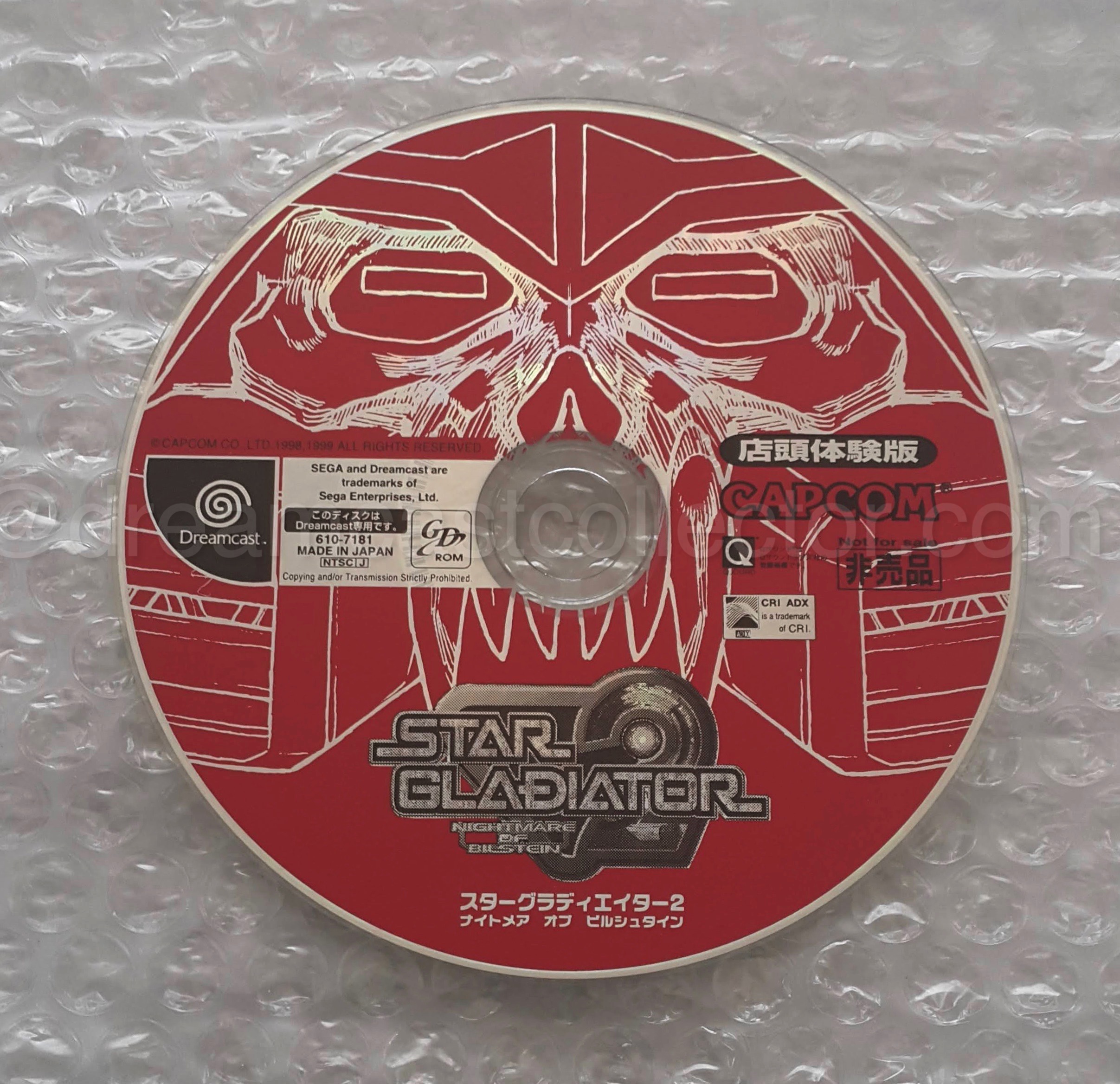
A typical example of a Japanese Not for Sale disc, in this case, Star Gladiator 2. Many of these discs will have variant disc labels compared to the final retail version but almost all will display the 非売品 designation on the face of the disc or packaging or both.
All the utility discs featured in the article also exhibit some unique characteristics on their reverse when compared to typical PAL software. Undoubtedly, the most noticeable addition is a barcode that varies by size on each individual release and generally takes up a significant portion of the discs mirror band. For those not familiar with PAL software in general, it’s a perfectly reasonable assumption to assume this is a standard inclusion on PAL Dreamcast discs. However, it is not and is a trait that is exclusive to Japanese utility software. As is customary, all the discs pertinent information will be, exhibited in and around the mirror band including the disc’s full catalogue designation. In addition to both an IFPI Mastering code & IFPI Mould code. The latter is usually found on the discs plastic hub that regrettably, in some cases, can make them exceptionally hard to read.
Both of the discs IFPI codes succinctly provide important information about the location and equipment used to replicate the disc. This is, accomplished, by the IFPI SID Mastering code that details both the glass master equipment and its location. The IFPI SID Mould code provides the company and plant which pressed the disc. Sadly, it seems that Japanese 非売品 software was replicated at different plants so, for the article, I’ve documented both of the IFPI codes on each disc and who they represent. I will add a disclaimer that my knowledge about disc replication is lacking at best. Also, I haven’t come close to documenting every example of PAL region software, so I can’t conclusively state that it all was pressed at a single plant. However, all my remaining PAL software shares the same IFPI SID Mastering code of L045 that I’ve identified as belonging to EMI-HOLLAND. I suspect that outside a small number of discs, the majority of PAL software emanated from this plant.
With utility software, in general, receiving next to no attention from European collectors despite the abundance that was distributed, throughout the PAL region. It is hardly surprising then to find that Japanese catalogued utility software is either undocumented to any significant degree or disregarded out of hand. With this being the case, I expect, that many readers will be from countries outside the former PAL broadcast region. Given this situation, I think it’s worth noting that SEGA Europe employed something of a minimal visual aesthetic for the Not for Sale software released in PAL territories. This is probably best illustrated by the various white-label promotional discs, which fulfilled a similar function as a Hibaihin disc in Japan. It may be controversial to those few white-label collectors but, I consider both the initial release of the Dreamkey browser & DreamOn Volume 1 to be part of this collection of software. Not through content obviously but, visual design as both discs adhere to the same aesthetic, as those promotional discs. In my opinion, what precludes these discs from being considered part of this collection is the fact they’re not, thought of being traditional software. Unfortunately, this means interest in them is generally lacklustre at best.
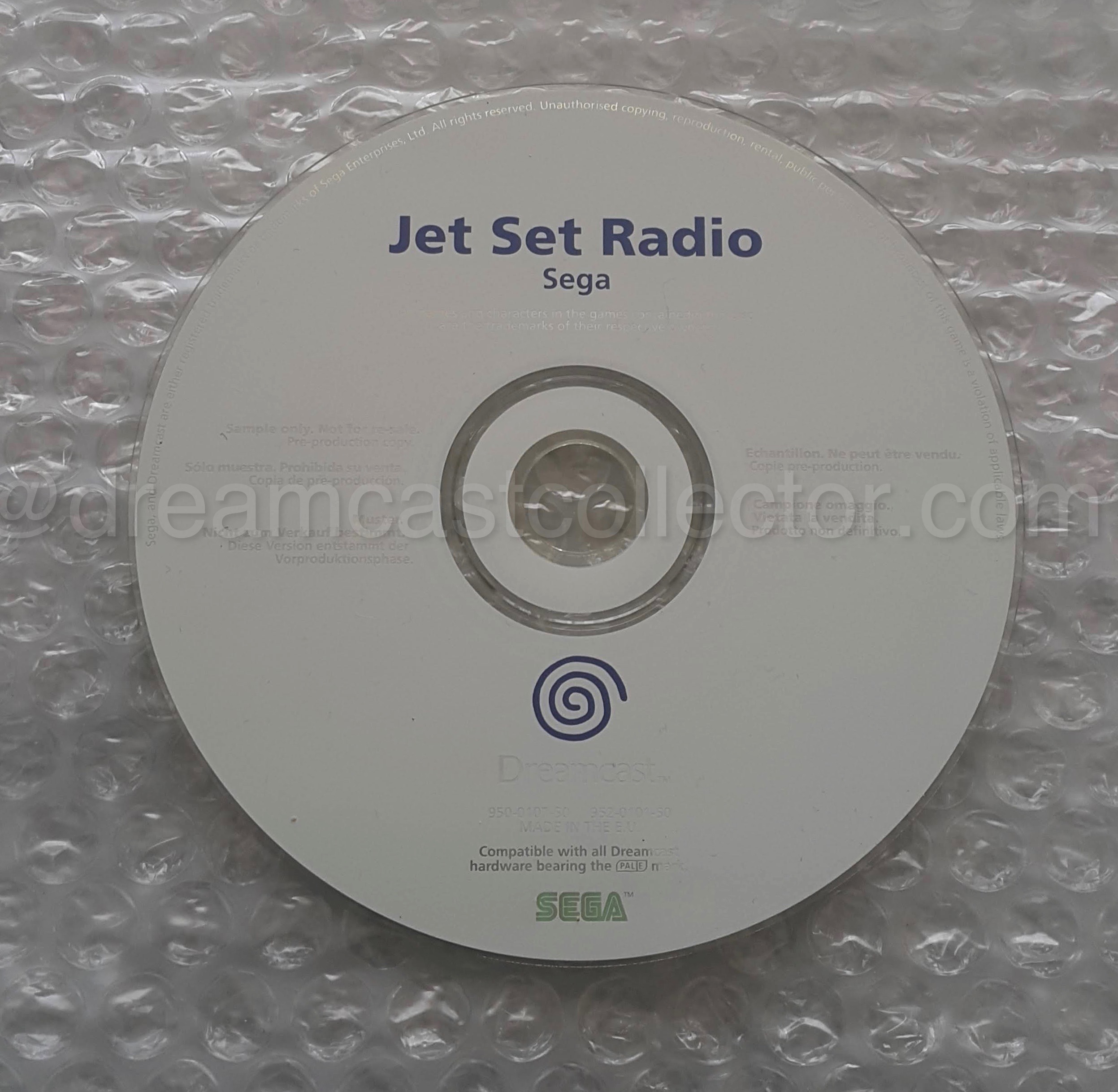
While I suspect the various white label discs will be instantly familiar to the majority of European collectors I’m not sure this will be the case for Non-PAL collectors. Bearing this in mind, I’ve included a picture of a typical example of a white label PAL promotional disc which will hopefully illustrate that they shared the same visual aesthetic as the initial Dreamkey & DreamOn demo discs.
An anomaly that all the utility software featured in the article share is they all lack any official information that documents, their actual release dates. The only two exceptions to this are the initial releases of the Dreamkey browser & DreamOn demo disc. While it might be considered contentious by some as their status as bundled software means that their release date will be the same as the system itself. The issue is it’s well-known that the European launch of the Dreamcast was delayed by logistical issues, at least twice from its original intended launch date. The system was finally available on the 14th of October ’99 so, with the absence of any information to the contrary, I’ll class this as the original Dreamkey’s launch date.
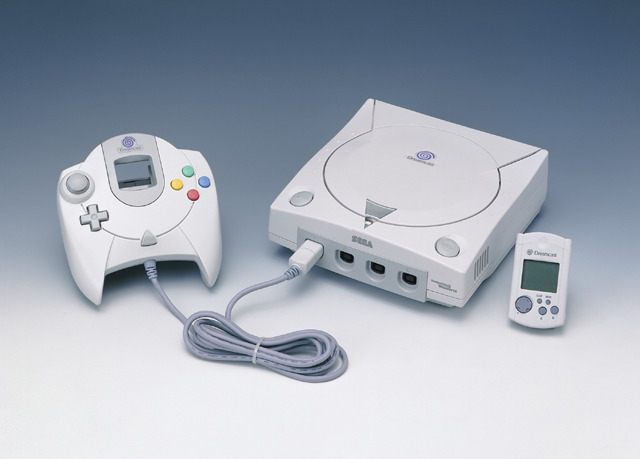
The initial Dreamkey contains omake content on the disc that is viewable when it is placed in a computer CD or DVD drive. These are a mix of early Japanese promotional images in addition to later PAL photos of various launch hardware. © 1999 SEGA All Rights Reserved.
As I’ve stated, SEGA Europe intended all the PAL utility software to adhere to the same uniform design, at least initially. With that being said packaging, varies between the numerous types of this software. The ubiquitous white label promotional discs came packaged in a transparent jewel case although, the Acclaim titles came in clamshell packaging. The software that was included, along with the system deviates on packaging depending on its type. The initial Dreamkey browsers came in a jewel case with front & tray inserts, while the DreamOn demo discs came in the same fashion as the white label discs. While I can appreciate the visual aesthetic SEGA Europe employed for its utility software, nevertheless, it has to be said that It’s uninspiring at best. While the overall design is unobtrusive it does invoke the feeling of something resembling a budget release.

The main title screen of the initial release of the PAL DreamKey browser is just as bland as the disc’s packaging. Compared to both the NTSC U PlanetWeb & Japanese Dream Passport, the Dreamkey’s interface lacks personality. Despite the network infrastructure throughout Europe being provided by BT’s affiliates, it’s strange that their branding is only briefly displayed on the software, not anywhere on the packaging.
A perfect example of just how maligned PAL utility software is, regarded is by the first disc I’ll detail. That at one point would’ve been owned by the vast majority of European Dreamcast owners. The original instalment of the Dreamkey browser was and still is so omnipresent it’s become irrelevant in most collectors’ eyes. This is, despite it receiving three subsequent regional variants, the last two of which were non-European iterations. Another aspect of why the original Dreamkey is so neglected is that functionally it’s currently obsolete and has been for the best part of two decades.
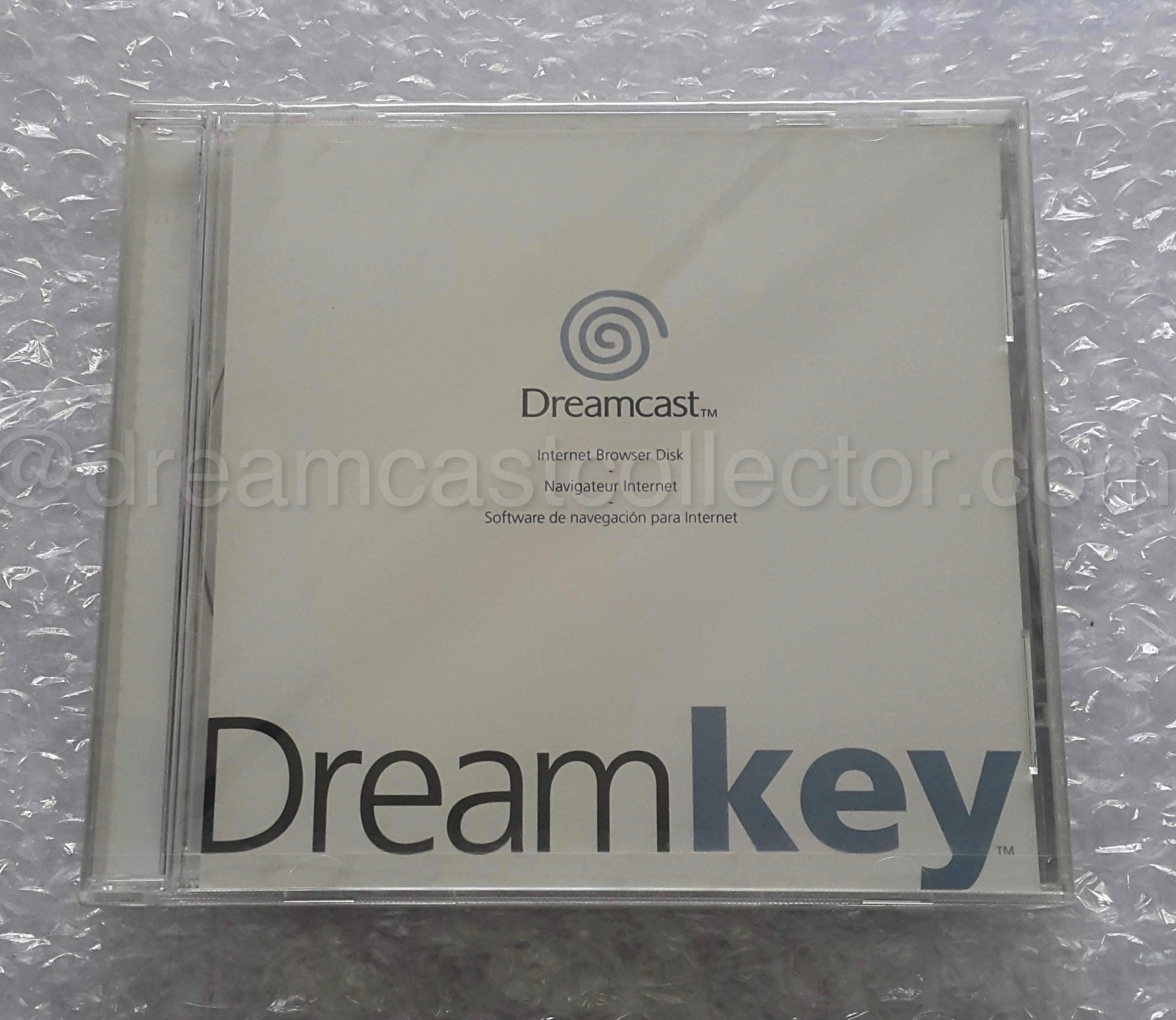
While I can appreciate the clean design of the Dreamkey’s front insert, It’s undeniably visually bland. The lack of any German-language text is strange as the browser allowed users in that country online access. It wasn’t due to a lack of space, but no official reason has ever been forthcoming as to why German, wasn’t included along with the other three European languages. Another issue is the fact, that it’s impossible to discern between the initial Japanese and the later domestic European version by the front of the jewel case alone.
The Dreamkey’s front insert is, to be honest, quite uninspiring from a visual standpoint. I’m sure SEGA Europe would claim this as intentional, closely aligning the browser with other examples of utility software. I’ve mentioned before about the budget look of the packaging of the browser that compared to both the American PlanetWeb & Japanese Dream Passport browsers design looks particularly bland. Starting at the bottom of the front inlay is the prominent two-tone black & blue Dreamkey branding. The middle of the cover displays the following text in three languages ‘Internet Browser Disk, Navigateur Internet & Software de navegación para Internet’ these are obviously, English & French & Spanish respectively. One puzzling aspect about the original Dreamkey’s packaging is that despite Germany being the fourth country that it enabled online access in no German-language text appears on the insert. Directly above the European text is the familiar blue Dreamcast swirl logo.
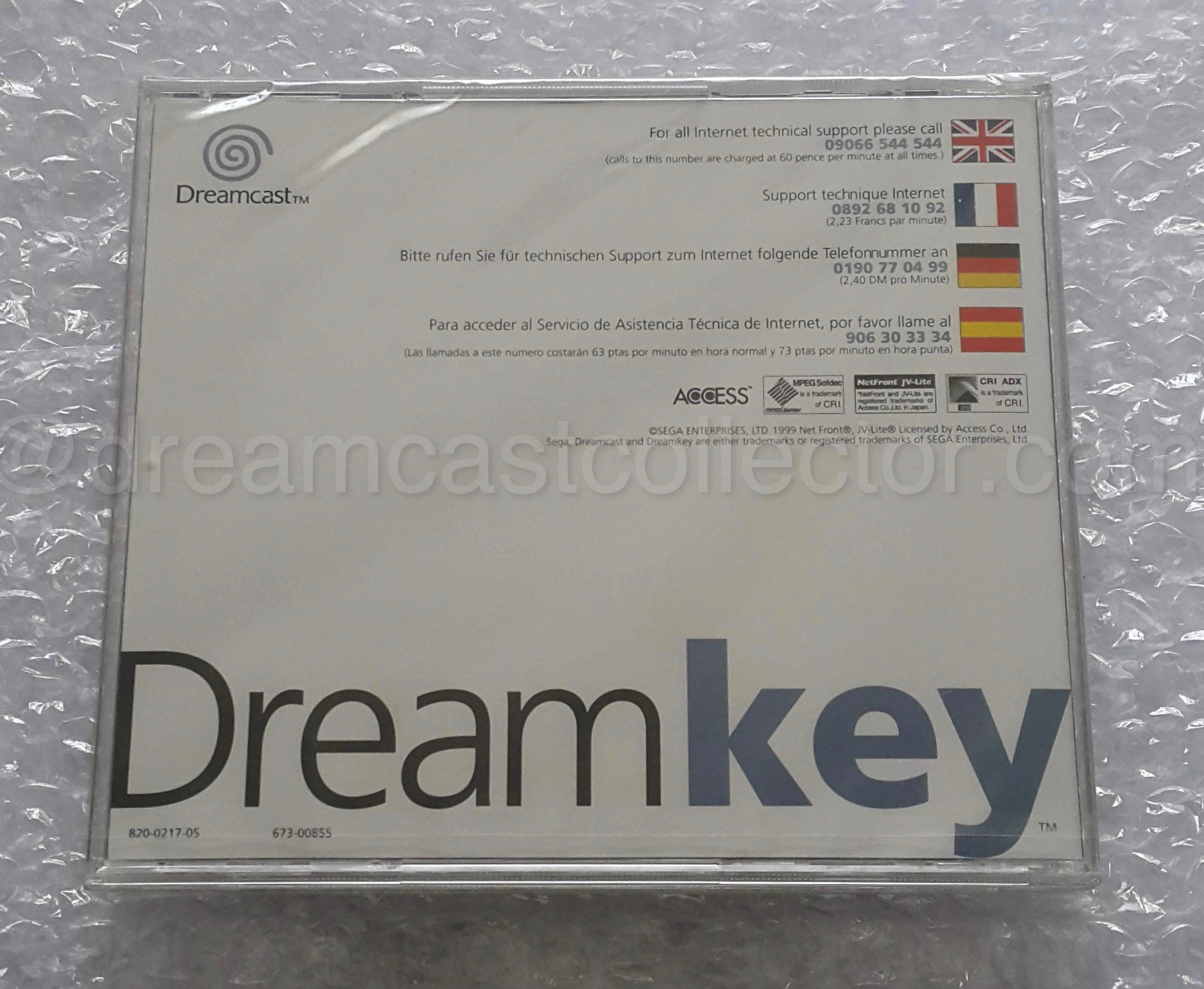
The reverse of the initial Dreamkey is as underwhelming as the front. Again, this is exactly the same as the later EMI-HOLLAND variant except, this version has both a PAL and NTSC J product code displayed at the bottom left corner, while the domestic version only features a PAL serial instead.
Unfortunately, the tray inlay is just as visually austere as the front insert was. As it continues the plain, design it does, however, inject some colour as both its spines feature the same metallic blue as found on the system’s outer packaging. They also display the Dreamcast swirl logo and two product codes, the first being a PAL serial of 832-0002-05 with the last two digits representing SEGA’s region code for a general European release. The second serial shown is a Japanese, designation of 610-7373 that is a truncated version of its full catalogue code. The principal portion of the insert is predominantly, taken up by displaying the UK, French, German & Spanish national flags in conjunction with their corresponding technical support details. Also exhibited are the Dreamcast swirl logo and the corporate branding of the various companies whose software was licensed to create the browser. The lower section of the insert is sparsely populated, save for the oversized Dreamkey branding that takes up a significant portion of space. Underneath this are two additional product codes, a PAL designation of 820-0217-05 followed by a Japanese serial of 673-00855.
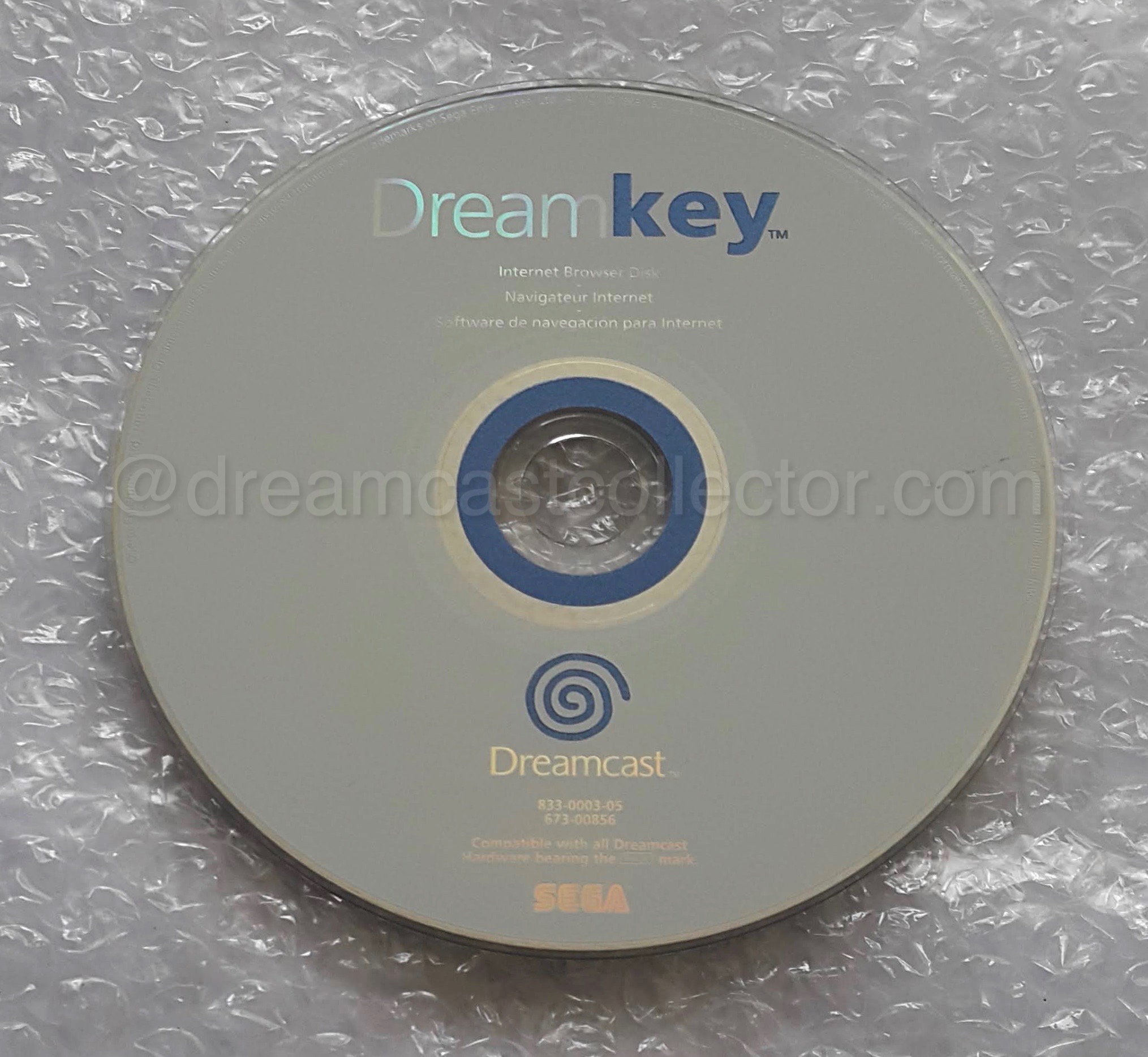
At first glance, the initial Japanese manufactured Dreamkey disc’s label is ostensibly the same as the subsequent iteration that was replicated, by EMI-HOLLAND. The most obvious change between the two variants is this version has two product numbers firstly, a PAL code followed by a Japanese 673- code. While the later domestic version obviously, only displays a single product code instead.
The disc label is remarkably similar to the front insert almost, being identical. However, it does deviate slightly as the Dreamkey branding & Dreamcast swirl logo have had their position inverted from the front insert. Despite this, the three European languages remain unchanged from their previous location. The plastic hub is partially obscured, with the familiar metallic blue that was, used on the system’s outer packaging. This is confined by the discs mirror band and stacking ring. A trait all Japanese catalogued PAL utility software share is if they exhibit two serial numbers on the face of the disc, the first one will always be a PAL code followed by a Japanese designation. My Dreamkey disc displays a PAL serial of 833-003-05 conversely, its Japanese code is 673-00856. Leaving the only other relevant information as the obligatory SEGA logo and the discs copyright information.

The disc’s inner ring is where all the pertinent information is located. All the NTSC J PAL utility discs adhere to the same template with a barcode, IFPI SID mastering code & full catalogue designation. An IFPI Mould code is generally found, pressed or scratched in the disc’s plastic ring.
The reverse of the Dreamkey disc adheres to the template that I’ve previously outlined. That means the pertinent information on the data side of the disc is, positioned, in or around the discs mirror band. When compared to a standard PAL disc, the most pronounced difference will undoubtedly be the discs barcode as it dominates, the mirror band as it takes up almost half of it by itself. The disc features an IFPI SID Mastering code of IFPI L262 that, to my admittedly brief research, is the code relating to Marquee Inc, Japan. Following this is my discs full catalogue designation of 610-7373-0217B MT B01. I have to confess I don’t have enough knowledge about disc replication to state with any great certainty what either -0217B & B01 represent. I can only assume that they relate to batch codes or other manufacturing information, but I’ll continue my research in an attempt to determine what their inclusion means. The final piece of data is the IFPI SID Mould code of IFPI 4481 that I’ve identified as belonging to Memory-Tech Corporation, Japan. This has been, pressed into the disc’s plastic hub.
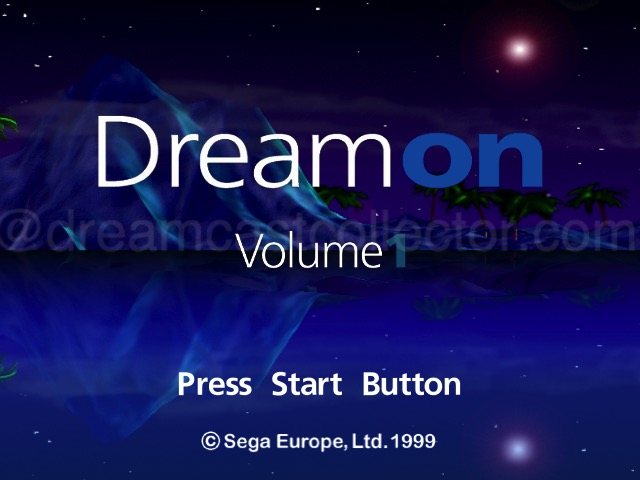
DreamOn Volume 1’s main menu screen was designed by SEGA Europe. While I don’t think it’s of the same calibre as some of the Japanese demo discs, the menu system is intuitive and easy to navigate. With the general budget feel of much of the early PAL titles packaging, it’s somewhat surprising that I have to give credit to SEGA Europe as the design of their menu system is decent certainly, I had expected a lot worse.
It may be chronologically inaccurate to state that DreamOn Volume 1 was the second piece of utility software released in PAL territories as it was distributed, at the same time as the Dreamkey browser. Whether people consider this or the browser disc as the first piece of PAL utility software is open for debate. However, this disc was likely many peoples first experience with a Dreamcast as despite being included with the system, it was also, used in the Dream Pod demo kiosks during the systems launch window. But for this article, I’ve chosen to document the software in this particular order.

The interface in DreamOn Volume 1 is intuitive and was developed by SEGA Europe as this is, confirmed by placing the disc in a PC/MAC where you can access the discs copyright information. I’ve already stated that the selection of demo’s featured on the disc could’ve been more enticing. As many of the non-interactive games already had existing playable trials that would’ve promoted the system arguably in a more positive light.
While the disc label continues the plain aesthetic found on the Dreamkey browser, the packaging as a whole has more in common with the previously mentioned white-label promotional discs. This is due as unlike the Dreamkey browser, DreamOn Volume 1, shipped without any inserts. Whether or not this affected the design of the face of the disc is unknown, but it necessitated the listing of the contents of the disc directly on the label itself. Given that both the North American & Japanese demo discs generally came either in a sleeve or with a front insert to document their contents, the fact that SEGA Europe decided not to follow suit is strange. It might be derisory of me to suggest that the lack of inserts or even a cardboard sleeve is probably due to financial reasons rather than any desire to maintain a uniform aesthetic

It has to be, said that compared to the multi-game demo discs released in both the NTSC J & NTSC U regions the packaging of the PAL demo discs leaves a lot to be desired.
With the absence of any inserts, the disc label is, divided by listing the contents on the left side while the right side details the various publishers whose titles are, featured on DreamOn Volume 1. The selection of titles is, split into two categories. The first selection is interactive, found under the ‘PLAYABLE’ heading that offers the following assortment of demos, Monaco GP Racing Simulation 2, Toy Commander, Ready 2 Rumble, Incoming, and lastly, Trickstyle. The second type of demo is, relegated to video content listed under the ‘MOVIE category. This selection features Vf3tb, Red Dog, Snow Surfers, Powerstone, UFEA Striker, Tokyo Highway Challenge, Sega Rally 2 & Sonic Adventure. I’ve already mentioned that the right side of the face of the disc lists the publishers & copyright details of the titles included on the disc. The lower portion of the disc label displays both the Dreamcast swirl logo and the SEGA logo which between these are two product codes, the first of which is a PAL serial of 833-0002-50. Again the last two digits denote this as being a generic European release. The second product code is a Japanese designation of 673-00860. The only other information left to document is the discs copyright information that is displayed around the outer top edge of the disc.
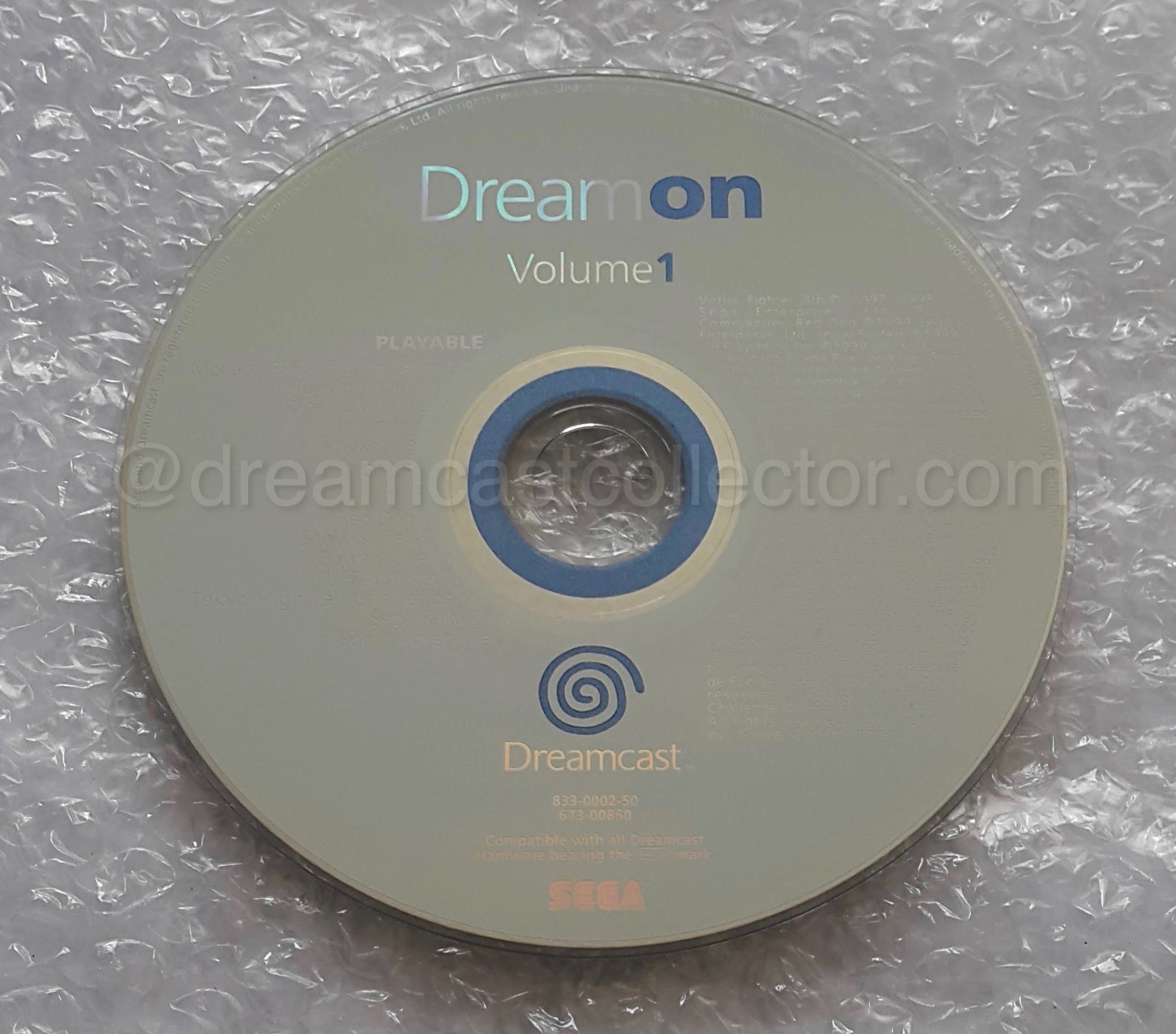
DreamOn Volume 1 will likely be very familiar to many European Dreamcast owners, given it was the default pack-in demo disc for early Dreamcast systems. It was at an undetermined point, replaced with a domestic PAL iteration.
As expected, the majority of the pertinent information on the data side of the disc, is concentrated around the mirror band. The discs barcode is prominently visible simply due to its large size. In turn, this is, followed by Its IFPI SID Mastering code of L262 which I’ve already managed to identify as belonging to Marquee Inc, Japan. My disc’s complete serial code is 610-7389-0219 MT B07 Which I have to confess that I honestly don’t have any point of reference to state whether this represents an early or later incarnation of the software. The only remaining information of note is the disc’s IFPI SID Mould code of 4482 which is located just above the stacking ring. Unfortunately, despite attempts to identify the plant this code relates to I’ve been thus far unable to ascertain who it belongs to.
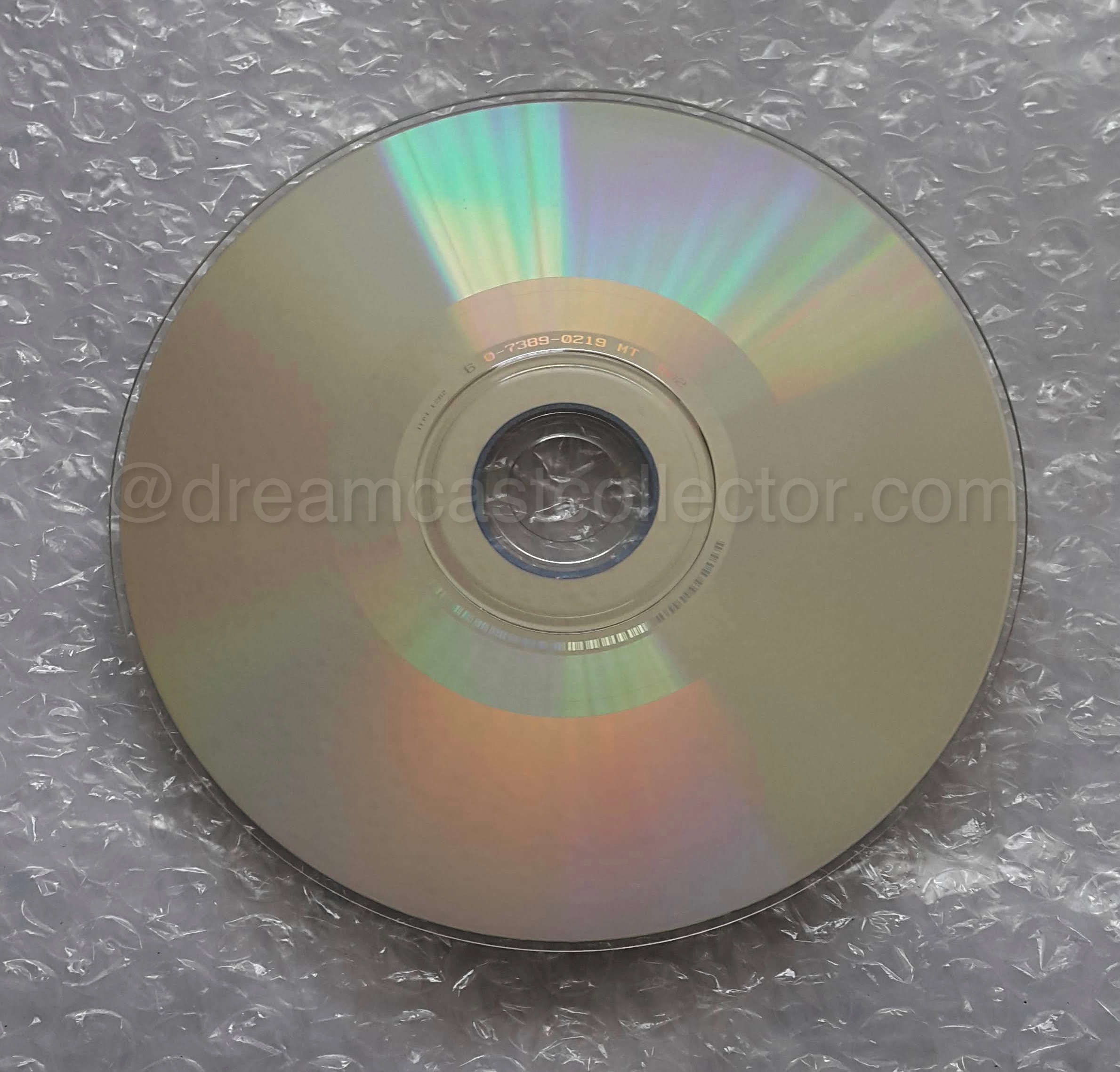
I suspect that many readers of this article will likely, have a copy of this disc that, will have an alternate catalogue code. Sadly, I’ve been unable to confirm when the Japanese version was, subsequently replaced by the domestic PAL iteration manufactured by EMI HOLLAND. I’m convinced that with the amount of inventory packaged, with PAL Dreamcast’s it was some time after the initial change had occurred before it filtered through at retail.
I’m cautious about derailing the article too much by documenting each title included on DreamOn Volume 1 in detail. However, I will give a brief overview of the content found on this disc. Quite simply, the main issue I have with this demo disc is the majority of the non-interactive titles already had existing playable demos available in other regions. Highly anticipated titles such as Soul Calibur & Blue Stinger are conspicuous by their absence. While others like Sonic Adventure & SEGA Rally 2 are, relegated to video content. I can distinctly remember people actively avoiding demo kiosks whenever Toy Commander was running simply because the controls weren’t intuitive for casual pick up & play. This is no reflection on the game itself but, it’s simply not what I’d describe as an ideal causal title to introduce people to the system due to its control scheme. I feel playable demos of Sonic Adventure or Power Stone both would’ve been better ambassadors for the system to the general public. I can only assume SEGA Europe were keen to showcase third-party titles as all the playable demos found on the disc are non-SEGA developed titles.
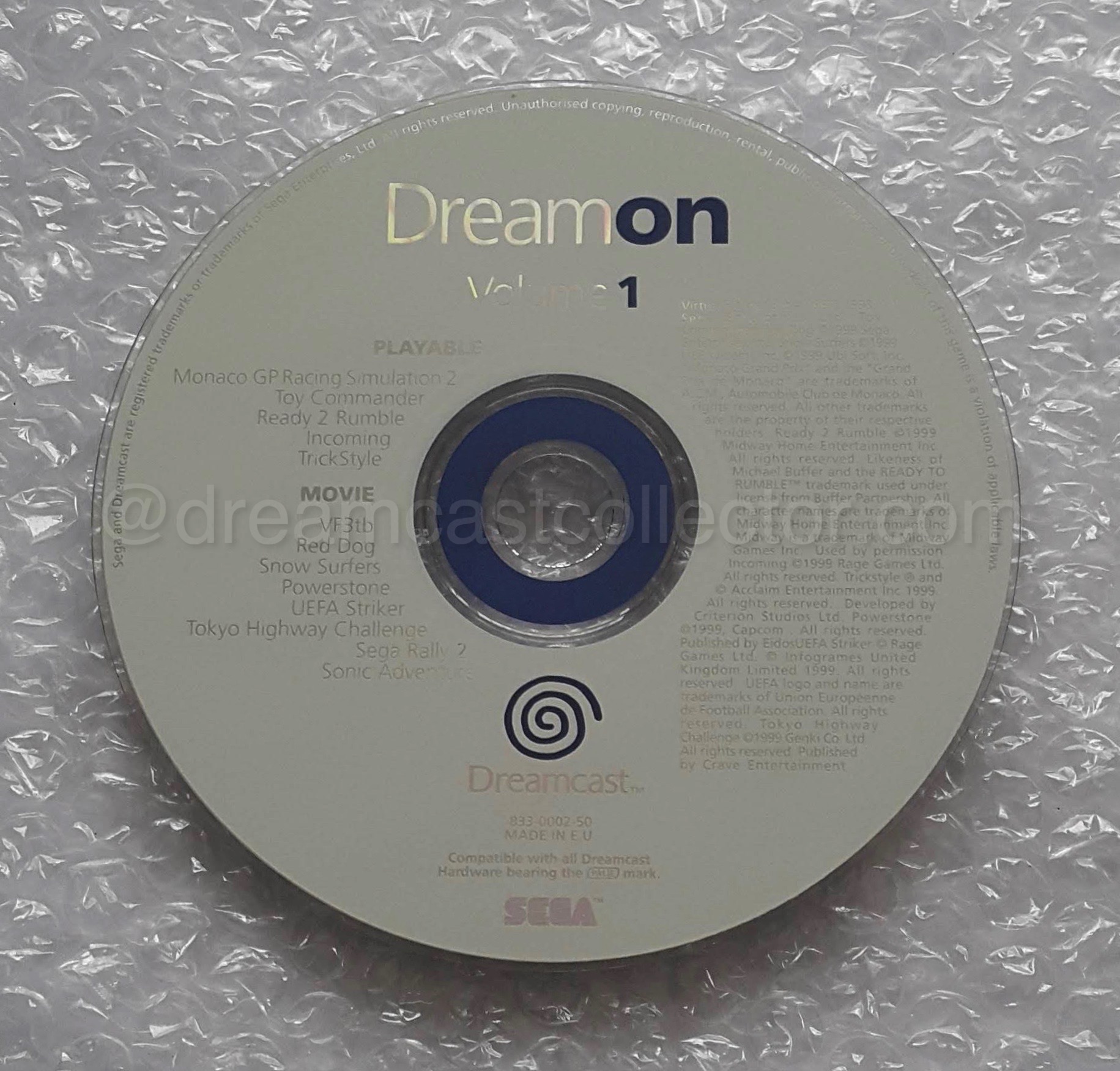
While not part of the Japanese 610- catalogue, I’ll provide a picture of my copy of the domestic European iteration of DreamOn Volume 1 for comparison. I’m convinced that either the original Dreamkey or this demo disc are the most ubiquitous of all the discs released in the PAL region.
I feel it’s worth reiterating that only the initial releases of both the Dreamkey browser & DreamOn Volume 1 are Japanese catalogued discs. At some undetermined point in time, they were subsequently replaced with domestically replicated iterations by EMI-HOLLAND. Initially, these updated revisions came packaged identically to the initial Japanese releases. Especially in the case of the Dreamkey, It’s, impossible to discern between the two releases by their front cover alone. At first glance, the tray insert will look equally unchanged, but the later PAL iteration will obviously omit the Japanese product code and just displays a single PAL serial number instead. While this does provide a relatively easy way to differentiate between the initial Japanese & later PAL revisions, it still can pose a problem identifying between versions online. It’s still common to find either stock images or pictures of just the front cover online which, can be frustrating. The final variant is a two-disc combination of the EMI-HOLLAND replicated Dreamkey & DreamOn Volume 1 discs that were again, bundled with the system. I’m convinced that this iteration was simply a way for SEGA Europe to use up existing inventory and implement cost savings because they implemented a refresh of both the browser & demo disc soon afterwards.

Only the most basic localisation of the French iteration of the Dreamkey has been completed. Many of its screens are left untranslated whether this was due to time or budget is unknown. Despite its intended market, it still allowed users, in the three other countries shown on the rear insert online access.
The next software I’ll document is, something of an anomaly as it represents the final iteration of the original Dreamkey released in Europe. Just as the more common European iteration enabled French owners to go online, this instalment still also allowed British, German & Spanish users’ online access. It seems on the face of it to be a somewhat superfluous release as both this and the previous documented Dreamkey are functionally identical. I can imagine one possible explanation might be that there was an issue with either the network provider or the software itself that resulted in this regional, exclusive Dreamkey. I have to confess I know relatively little about this version of the browser, to the extent I can’t provide a confirmed release date for this iteration of the software. If I had to guess, I suspect that it was either at the same time as the general European Dreamkey or shortly afterwards. The biggest misconception about this is that it’s a simple repackaging of the more familiar 610-7389 iteration rather than a unique release.

As I’ve mentioned, I’m at a loss to explain exactly why France received a unique iteration of the DreamKey browser. Especially when the general release enabled online access for French owners. It’s clear that whatever the reason SEGA wanted this regional exclusive to be visually unique when compared to the more common iteration hence the metallic blue colour scheme employed for this release.
Thankfully this variant is easier to distinguish from the more prevalent European 610-7373 iteration. And for some inexplicable reason, SEGA France decided to bestow this exclusive variant with a unique colour scheme. I can only speculate that they required this instalment to be visually different to differentiate between the two versions of the Dreamkey software. I don’t think that it’s a coincidence that this change of colour on both of the insert’s, mirrors perfectly with the PAL system’s outer packaging. The most immediate visual difference is that the front insert is now metallic blue than the white of the previous Dreamkey. Despite the colour change, it still adheres to the same layout with all the various branding and logos present and correct. One issue, I’ve always found slightly strange is that despite being distributed in France, it didn’t just display ‘Navigateur Internet’ on its front insert. It still retains both the English ‘Internet Browser Disc’ in addition to the Spanish ‘Software de navegación para Internet’.
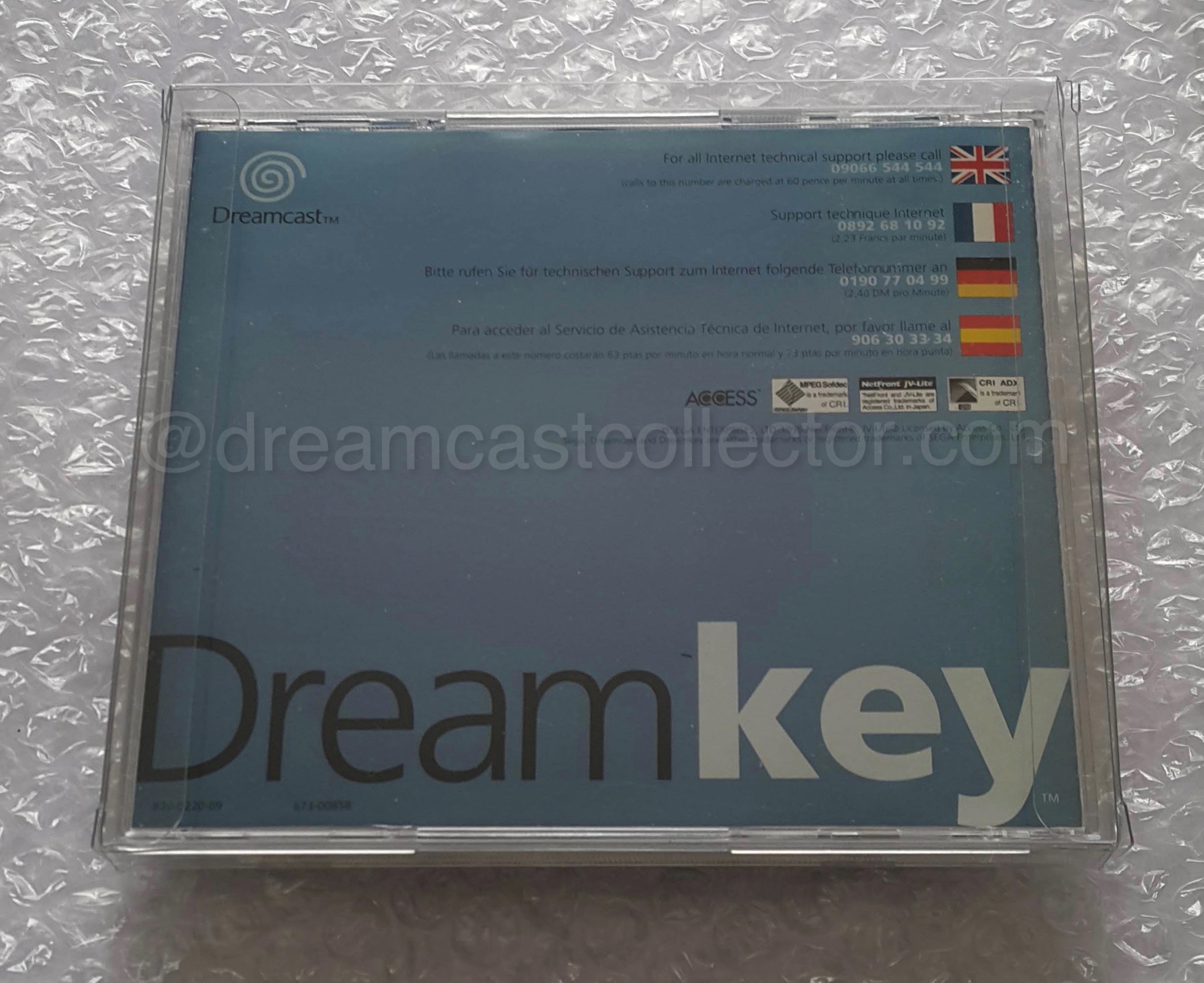
The reverse insert continues the metallic blue colour scheme but apart from this change is identical to the more common Dreamkey. The change in colour of the French iteration of the browser aligns more closely from a visual standpoint with the PAL Dreamcast’s outer packaging.
The metallic blue colour scheme continues on the disc label itself in contrast to the white found on the more prevalent European iteration of the browser. The only other colour featured is black which, was employed on the two-tone Dreamkey branding. With this release intended for the French market, I’m honestly surprised that it continued to use the three European languages rather than just ‘Navigateur Internet’. I suspect with, this iteration still enabling online connectivity in the other countries, it was necessary to retain the English & Spanish text. The plastic hub is, partially covered by the same metallic blue colour that is in turn surrounded by the discs mirror band. Underneath this is the familiar Dreamcast swirl logo, and directly below this, there are two product numbers. The initial serial is a PAL code of 833-0004-09 which like, the inserts, signifies this as a French release. The second code is as, expected a Japanese designation of 673-00859. The only other information displayed on the front of the disc is the various copyright details & warnings which, are located around the top edge of the disc.
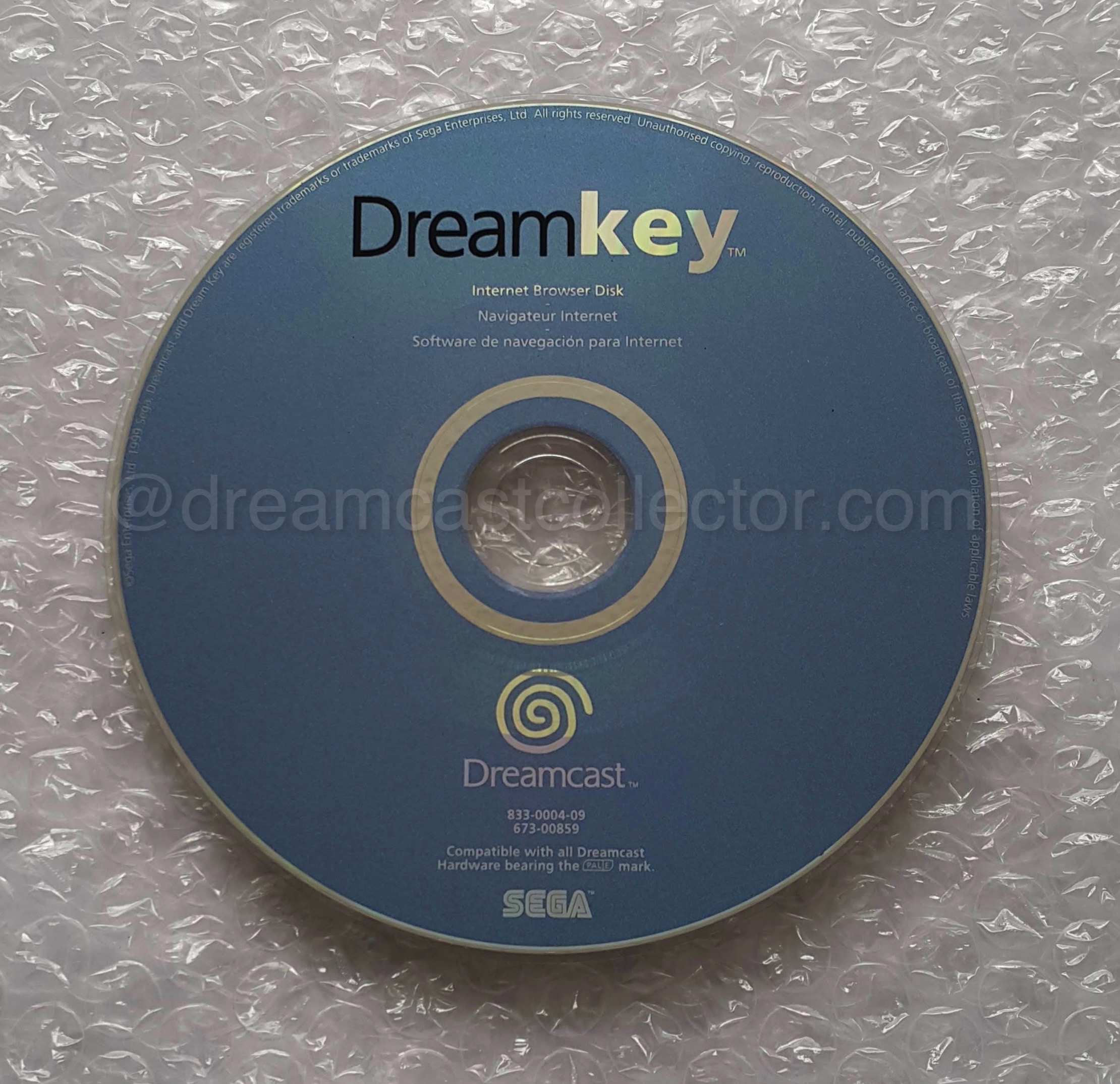
The French Dreamkey’s disc label differentiates itself from the more common 610-7373 European iteration. It employs the same metallic blue colour found on its front & back inserts on the face of the disc rather than the white of the earlier generic version of the software.
The disc label also adopts the same metallic blue colour as used on the inserts rather than the white found on the more prevalent European iteration of the browser. The only other colour featured is black which, was employed on the two-tone Dreamkey branding. With this intended for the French market, I’m honestly surprised that it continued to use the three European languages rather than just ‘Navigateur Internet’. I suspect as this updated iteration still enabled online access in the other three countries it kept the English & Spanish text. The plastic hub is partially covered by the same metallic blue colour that is in turn surrounded by the discs mirror band. Underneath this is the familiar Dreamcast swirl logo, and directly below these are two product numbers. The first of which is a PAL code of 833-0004-09 which like, the inserts, signifies this as a French release. The second code is as, expected is a Japanese designation of 673-00859. The only other information displayed on the front of the disc is the various copyright details & warnings which, are located around the top edge of the disc.
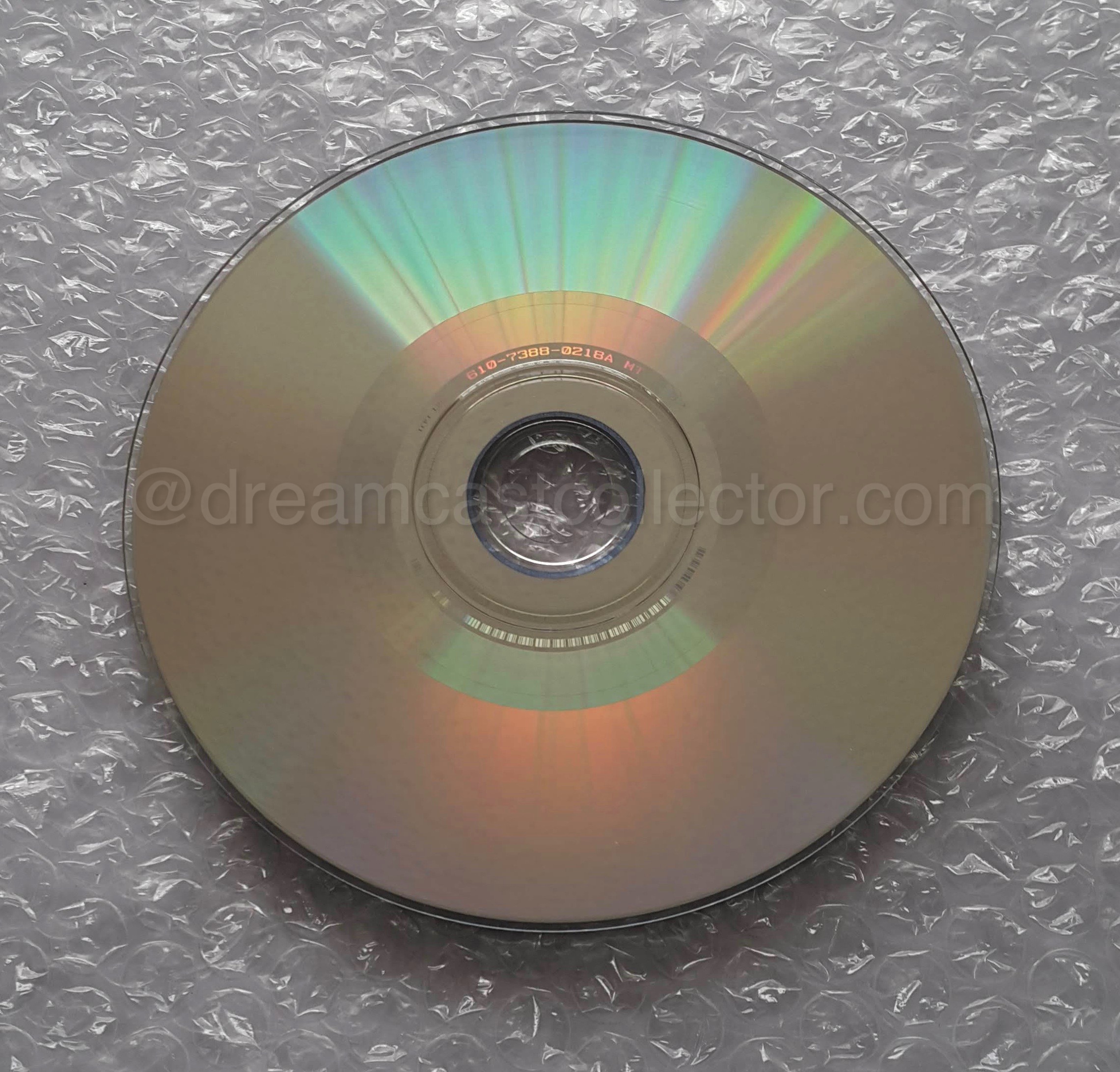
While intended for the French market, this regional exclusive iteration of the Dreamkey still enabled UK, German & Spanish user’s online access. As it’s the same software as the previous generic European DreamKey, it’s perhaps unsurprising but worth noting that it still retains the various promotional images that are viewable by placing the disc in a PC or MAC.
Continuing the established formula, the reverse of the disc has all its relevant data placed around the mirror ring. As expected, prominently displayed is the discs barcode which, is followed by an IFPI SID Mastering code of L262. This means that both the general European iteration, in addition to this French variant were replicated by Marquee Inc, Japan. My copies full serial designation is 610-7388-0218A MT B02. I’m convinced that there will be discs with alternate catalogue codes but, I haven’t had the opportunity to document many examples of this iteration of the Dreamkey browser to confirm. Pressed into the plastic hub is an IFPI SID Mould code of 4481 which I’ve previously elaborated belongs to Memory-Tech Corporation, Japan. As I’ve mentioned, this Dreamkey was subsequently, replaced by a much more prevalent version replicated by EMI-HOLLAND. The domestically pressed PAL variant saw a further final release as a combined Dreamkey & DreamOn Volume 1 edition mirroring the other European Dreamkey. I assume much, like that earlier release, it was also a way for SEGA France to implement both cost-saving measures & liquidate the existing inventory of both discs.

While many oft-requested features were absent from the original Dreamkey browser many peoples hopes rested on this updated revision to provide at least some of these anticipated features. Unfortunately, initial expectations about DreamKey Version 1. 5 soon turned to frustration as it was functionally the same as the previous release. According to SEGA, the sole purpose of this version of the browser was to allow Dreamcast owners in the Republic of Ireland access to the Dreamarena network.
To many, it might seem strange just how many different iterations of utility software were distributed, throughout the various former PAL territories. The explanation for this is simple as when SEGA launched the Dreamcast in late ’98, they lacked the necessary hardware in the system to accommodate the storage of large files due to the prohibitive cost involved. Despite online connectivity being a tenet of SEGA’s strategy for the Dreamcast, they also lacked the network infrastructure to enable the digital distribution of new software. SEGA were reliant on continually issuing updated revisions of utility software on physical media. The first major revision of the Dreamkey browser was the frankly underwhelming Version 1. 5 iterations of the software. According to a press release by SEGA Europe, the sole reason for this iteration of the browser existing was to allow users in the Republic of Ireland online access. Surprisingly, the Version 1. 5 software followed the same distribution template as the original Dreamkey with a ubiquitous European version and a more uncommon French variant. In the same fashion as those initial Dreamkey browsers, they were both subsequently replaced by iterations that were domestically replicated by EMI-HOLLAND.
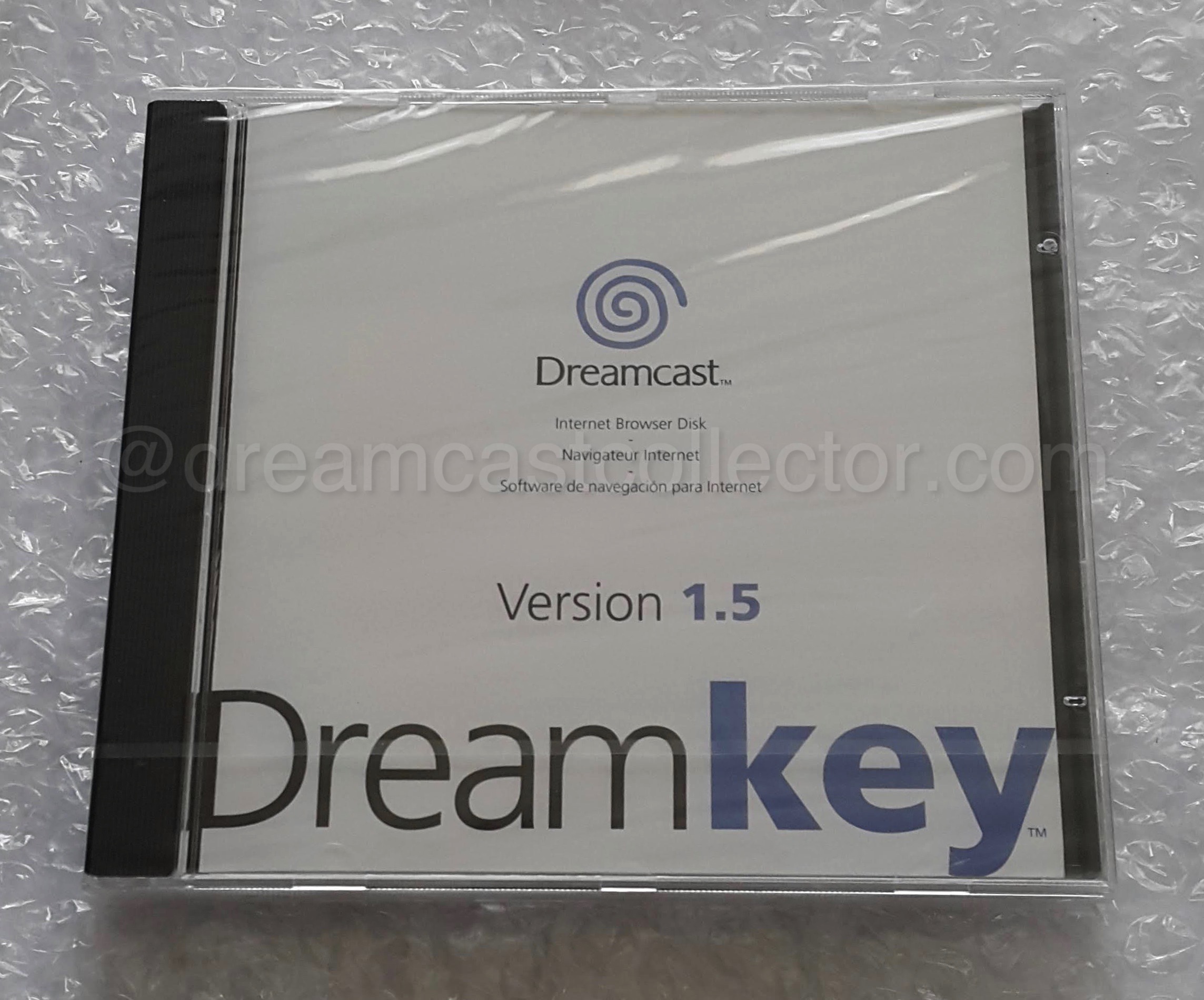
DreamKey Version 1. 5 also represented the final European browser discs to be replicated in Japan. Two further instalments of the previous Dreamkey were later released but restricted to smaller & emerging markets. Like the earlier two European Dreamkey releases, the updated Version 1. 5 software also saw two separate regional releases.
Unfortunately, I’ve been unable to conclusively state which iteration of the Dreamkey Version 1. 5 software was the initial version. It’s also possible that it might have been a synchronised release, however, I’m personally of the opinion that the French iteration was likely a later release. Given this situation, the first revision I’ll document is the more common generic European version of the software. Sadly, this updated browsers front insert is underwhelming in its familiarity as it’s essentially the same as the previous Dreamkey’s. The only change is the addition of the Version 1. 5 text that has been situated, underneath the obligatory blue swirl logo and the English, French & Spanish text. Otherwise, there is nothing else to discuss relating to the front insert that I haven’t documented in the previous iteration of the browser. While some may think I was slightly derisory towards the original browser’s packaging, the truth is this is the most economical update possible.
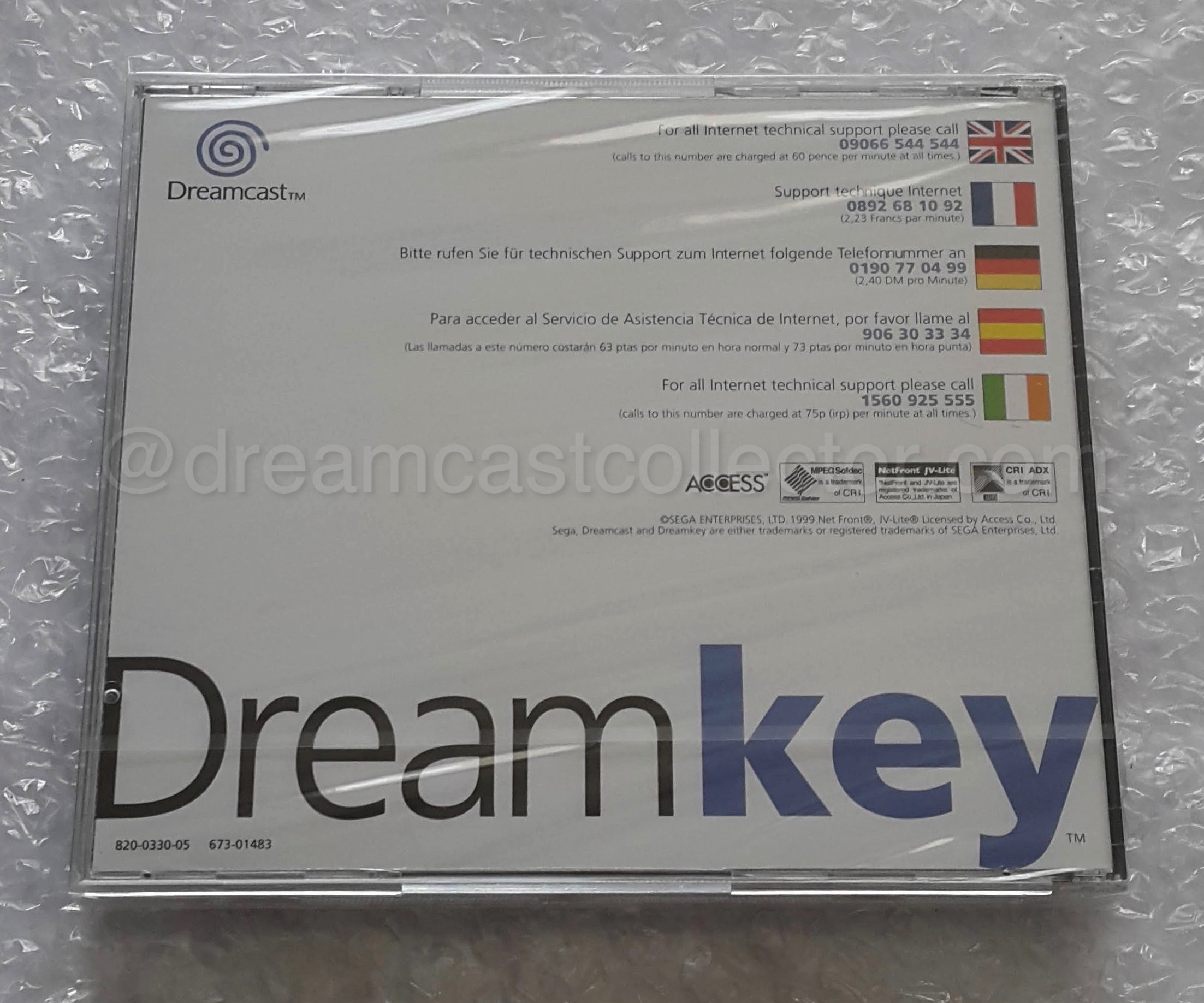
The rear cover of this updated iteration of the PAL browser is a carbon copy of the original Dreamkey with only the Irish national flag & technical support number added. While I understand this edition was issued, for a specific reason SEGA certainly could’ve made more of an effort with regards to the packaging of the browser.
With the apathetic redesign of Version 1. 5’s front insert, it’s unsurprising that the tray inlay also received a similarly minimal visual update. Sadly, the only visible difference between this updated iteration of the browser software and the original incarnation is the inclusion of the Irish national flag and the corresponding technical support details for that market. These have been placed, underneath the four previously documented countries on the initial Dreamkey software. This newer instalment only displays a single PAL serial code of 820-0330-05 on its spines. As I’ve mentioned earlier, the last two digits of a PAL code represent the intended region of release. The -05 is similar to 50 in that they both represent a general European iteration. The tray insert also displays two product codes adhering to convention, the first is a PAL designation of 820-0330-05. The second serial is unsurprisingly a Japanese product code of 673-01483.
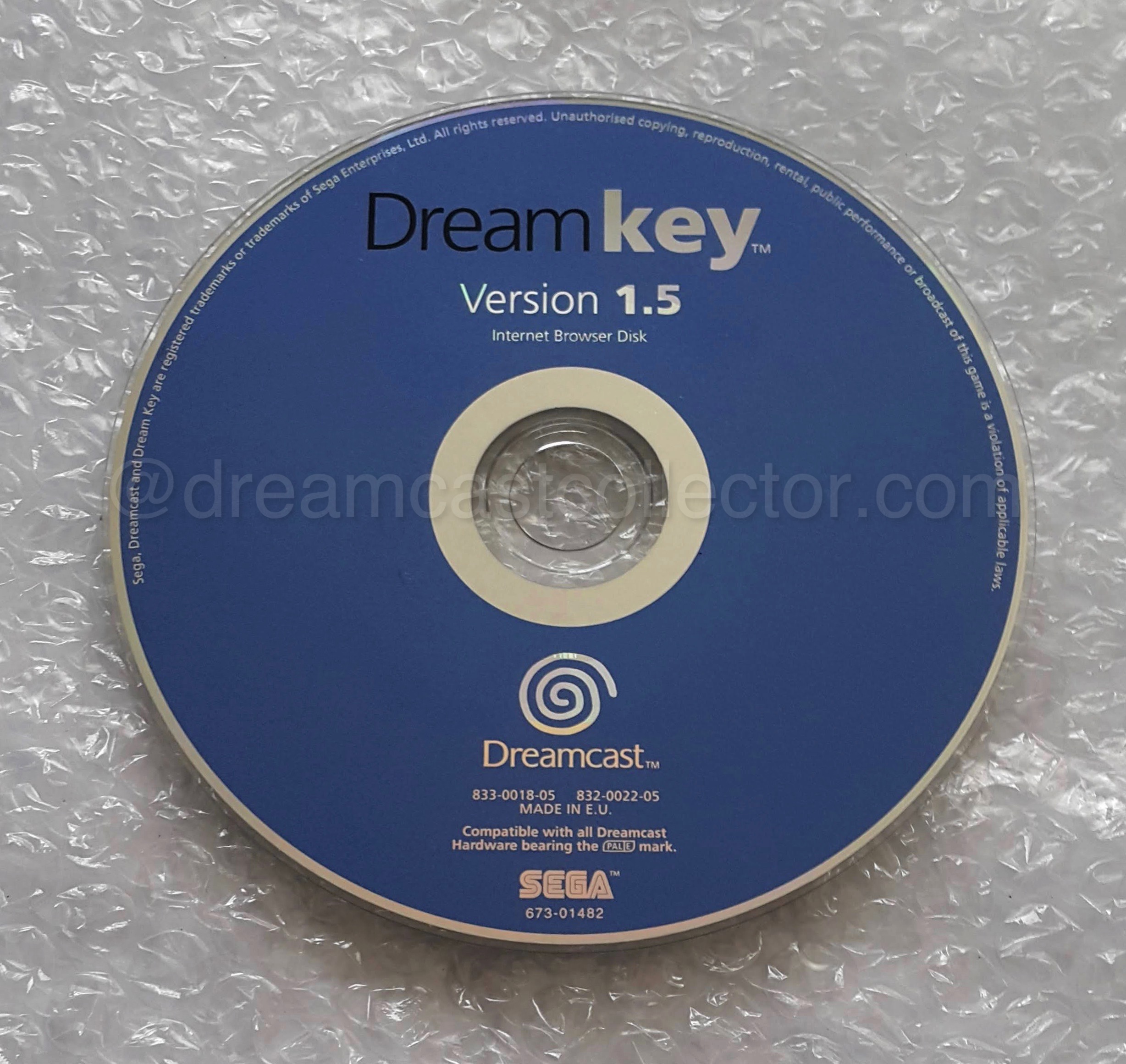
Honestly, the updated Dreamkey Version 1. 5’s packaging is hardly inspiring. For an unknown reason, SEGA decided to implement an unexpected change as the disc label retained the metallic blue of the previous French Dreamkey rather than the white of the generic European iteration of the browser. The only other change is the addition of the Version 1. 5 text that has come at the expense of the French & Spanish languages leaving only the English ‘Internet Browser Disc’.
Somewhat confounding expectations, the disc label is noticeably different from its predecessor. Immediately apparent is the change in colour as this iteration abandons the white disc label of the initial Dreamkey. Instead, it adopts the metallic blue colour scheme used on the previous French exclusive variant. Despite this iteration of the software intended for distribution across the main European markets the addition of Version 1. 5 text on the disc label meant that it wasn’t possible to accommodate the French & Spanish language text. This left only the English ‘Internet Browser Disc’ out of the three European languages of the previous release. Encasing the plastic hub is what I can only naively describe as an unusually thick silver band. The lower portion of the disc label is where the Dreamcast swirl branding and three product codes reside. As expected, the first two are both PAL serials which are 813-0018-05 & 832-0022-05. Underneath these, it also states ‘MADE IN THE EU’. At the bottom edge of the disc is the SEGA logo below this is the third & final product code which is a Japanese 673-01482 designation. The only other relevant information to be found on the face of the disc is the obligatory copyright details which are as usual placed around the top outer edge of the disc.

Sadly, the updated DreamKey Version 1. 5 doesn’t include any extra content when placed in a PC or MAC apart from the discs copyright information. Ultimately this means the original omake content found on the initial release of the browser was removed. It would’ve been nice if SEGA had seen fit to include some updated cont
The reverse of the disc conforms to the established visual template for Japanese catalogued discs released throughout the PAL region. Prominently displayed is the discs barcode that fills half of the mirror band by itself. The obligatory IFPI SID Mastering code is IFPI L155 which I’ve already documented as belonging to Toshiba-EMI, Japan. Accompanying this is my copies complete catalogue designation of 610-7824-0359 7 A6. Sadly, my copy has an issue relating to its IFPI SID Mould code which I believe is, replicated across the entire print run. The IFPI SID Mould code is partially pressed, into both the discs plastic hub and stacking ring which, causes it to be unreadable by the naked eye. I have attempted to read the code even though I only own some rudimentary magnification equipment. This means that I’ve been unable to decipher the IFPI Mould code as it appears to be double pressed. That being said, I’m confident that someone will have either already documented the Mould code or have the necessary equipment required to read it. But sadly, it’s beyond my current capacity to record it at this time.
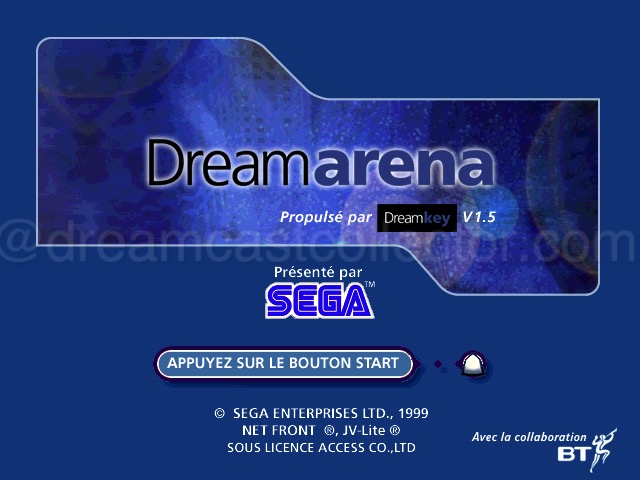
In the same fashion as its predecessor, the French translation is superficial at best, which is unsurprising, as it’s essentially the same code with just a few updated menu screens. It seems unlike the UK, France and the majority of other European nations soon upgraded to DreamKey 2.0 which, was a genuine upgrade of the browser with many new features designed to take advantage of the redesign of the Dreamarana portal.
As I’ve elaborated, the first revision of the Dreamkey browser followed the same distribution pattern as its predecessor. Given that, it was considered a rather underwhelming release with no new features apart from allowing users in the Republic of Ireland online access. The existence of a French exclusive iteration of the software is both surprising and somewhat, redundant. I’m unsure why either SEGA Europe or, more likely SEGA France, felt the need to distribute an updated French instalment of Version 1. 5 as nothing to, my knowledge, has ever been publicly disclosed on the subject. With the previous French Dreamkey having a unique colour scheme when compared to the more common European Dreamkey, you could be forgiven, for thinking this updated iteration would follow suit. Sadly, the front insert is identical to the previous 820-0330-05 edition. To the extent that it would be impossible to discern between both versions of Dreamkey Version 1. 5 by their front inserts alone. As this is the case, I won’t describe the front inset as I’d just be repeating the same information as found on the previous more prevalent general European version of the software.

Like the previous two iterations of the initial Dreamkey browser, it’s also impossible to differentiate between the general European release of the DreamKey Version 1. 5 and this French exclusive edition by the front cover alone. Unfortunately, this means that this updated instalment is sadly just as bland as the previously documented release.
Thankfully, unlike the front insert, the tray inlay of this French Dreamkey Version 1. 5 does diverge visually from the more common European incarnation. It still retains the metallic blue colour of the previous French Dreamkey’s inserts. Apart from the colour, the rear insert is virtually indistinguishable from the general European release. The most notable change is both spines still retain the white colour scheme of the original French Dreamkey. As expected, they prominently display the obligatory Dreamkey branding and a single PAL serial of 820-0330-09 on both spines. This product number is, repeated on the bottom left of the main panel as well, as a Japanese 673-01485 serial.

With the front cover being the same as the general release, unsurprisingly, the rear insert continues the metallic blue of the previous French DreamKey. This design is quite strange as if SEGA wanted the French DreamKey Version 1. 5 to be easily identifiable from the generic European iteration, the front cover would’ve made more sense to have in a different colour. Apart from the change from white to metallic blue, all the other information is the same as the previously documented version of the browser.
While the inserts of this updated French iteration of the browser featured an odd marriage of packaging styles, the disc label retains the metallic blue of the previous French Dreamkey. The layout is almost identical to the more common 610-7824 release but with one important alteration, as the previous English ‘Internet Browser Disc’ has been replaced with the French ‘Navigateur Internet’. It’s somewhat surprising this change wasn’t considered for the initial French Dreamkey but instead implemented on this updated revision. In a similar fashion to the other iteration of the Version 1. 5 software, this editions plastic hub is also ringed by what I’ve previously described as what appears to be a double thickness mirror band. The same logo, branding & product code placement are identical to the European iteration so, I won’t detail them here.
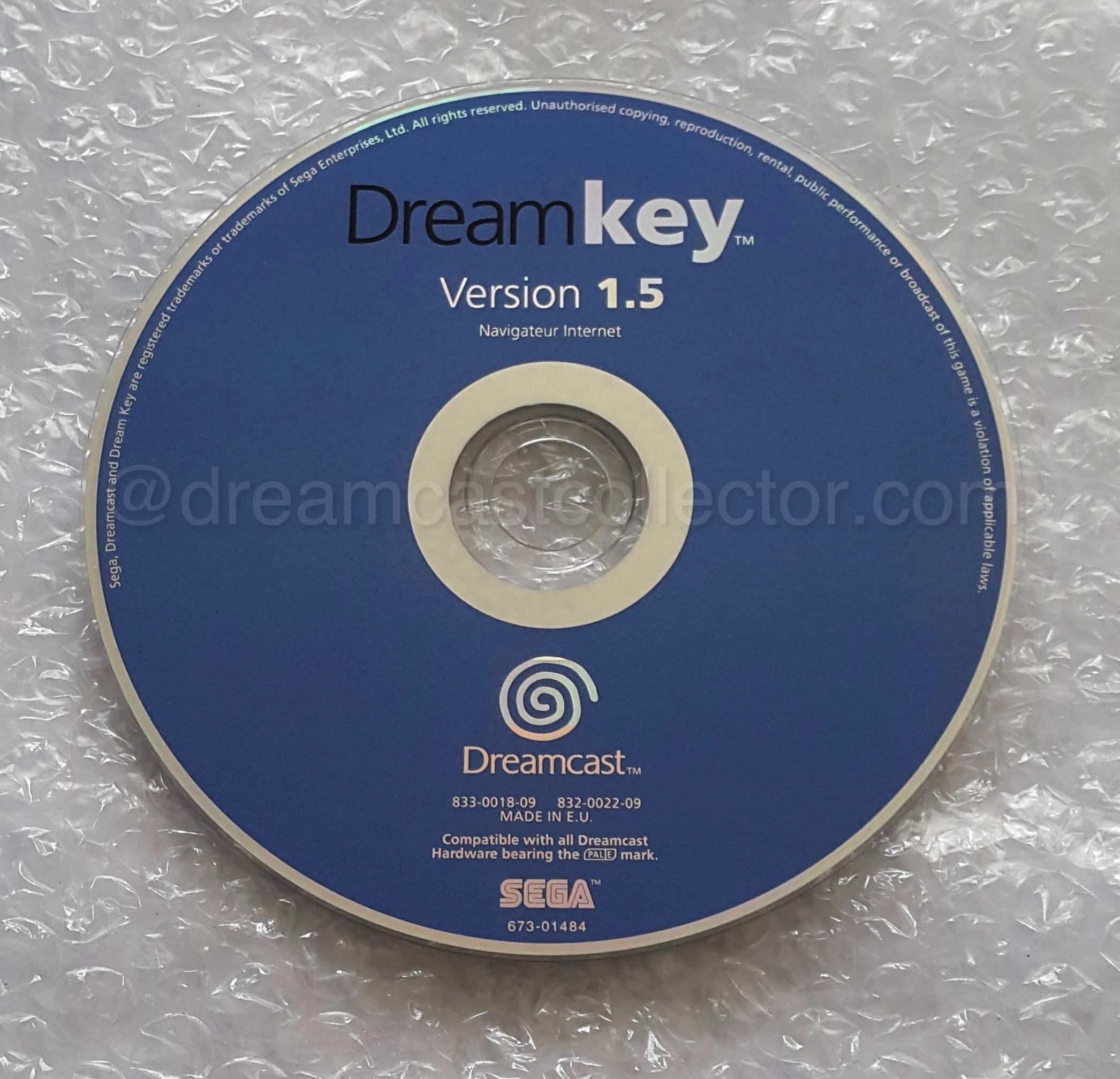
I don’t think that it’s unreasonable to assume that many European collectors will be unaware this French variant of Dreamkey Version 1. 5 exists outside of the French market. It also offers a slight difference from the general iteration as instead of ‘Internet Browser Disc’ it displays ‘Navigateur Internet’ that, while understandable, is still surprising. I suspect that displaying ‘MADE IN EU’ likely distracts many collectors from realising that this initial release is a Japanese disc.
As it would be redundant to repeat the same information, I’ll simply document the three catalogue codes displayed on the front of the disc. The first two are both PAL serials which are 833-0018-09 & 832-0022-09. Like so much about these utility discs, I’ve no explanation why this particular disc displays two separate French product codes on the disc label. It would seem to make more sense if the first was a French -09 code followed by a general European -50 code as it still allowed online access for the four other countries shown on the rear insert. Underneath these two PAL serials, it also surprisingly states ‘MADE IN THE EU’ that technically in part may be true when referring to the code contained on the disc but seems to be a slightly dubious claim nevertheless. Especially given that the disc was replicated in Japan. Beneath the SEGA logo is the third & final serial which is unsurprisingly a Japanese catalogue code of 673-01484.
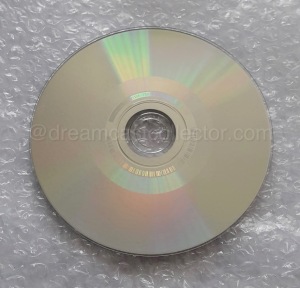
My particular disc of the French DreamKey version 1. 5 browser has a catalogue code of 610-7825-0360 5 A1. I fully expect, that given how prevalent this iteration of the browser is many numerical catalogued variants will exist.
Unsurprisingly, the reverse of this French exclusive iteration of Dreamkey Version 1. 5 shares the same configuration as all the other utility software I’ve documented in the article. The most notable aspect in the inner ring is undoubtedly the discs barcode that, like the general European release of the software I’ve documented, dominates due to its sheer size. I’m fortunate to own two examples of this release so, I’ll document both of their catalogue codes here, the first is 610-7825-0360 2 A3 while the second is 610-7825-0369 5 A1. While I don’t have any point of reference, I’m convinced, of the potential for a significant number of discs with alternate serial designations will likely be high. Both of my copies share the same IFPI SID Mastering code of IFPI LI55 that pertains to Toshiba-EMI, Japan. Unfortunately, they also inherited the same issue as the more common 610-7373 iteration in that their Mould codes are almost imperceptible to the naked eye. While I’ve become quite astute at finding their location, my attempts to decipher the IFPI codes have so far proved futile. It’s worth noting that this French variant is in, my opinion, seemingly much more prevalent than the previous French instalment of the original Dreamkey software.

DreamOn Collection 2’s main title screen continues the same aesthetic as the earlier PAL demo discs. The menu system is intuitive, while the title screen is uninspiring. It’s obvious, SEGA Europe were keen to promote their 1. 5 party developers with the inclusion of the rolling demo for MSR & the slide show for Ecco on the disc. While both of these titles are great games in their own right, the content relating to them on this demo disc is awful. Arguably, it would’ve been better not to have featured them in this format.
In a similar fashion to continually distributing updated Dreamkey discs, SEGA Europe was committed, to regularly publishing new instalments in their various series, of demo discs. The second iteration of the pack-in demo disc isn’t, as you’d assume DreamOn Volume 2 but rather confusingly the similarly titled DreamOn Collection 2. To complicate the situation even, more the DreamOn Volume series continued as the default Official Dreamcast Magazine cover disc starting with Volume 2 in select European markets where the magazine was available. As is typical, for so much utility software detailed in the article, no official reason has ever been, explained why this unnecessary substitution, was implemented. Continuing the theme of missing information, unfortunately, I’ve been unable to find any information relating to the date of transition from DreamOn Volume 1 to DreamOn Collection 2. If I had to hazard a guess, I assume it occurred simultaneously with the initial browser refresh.
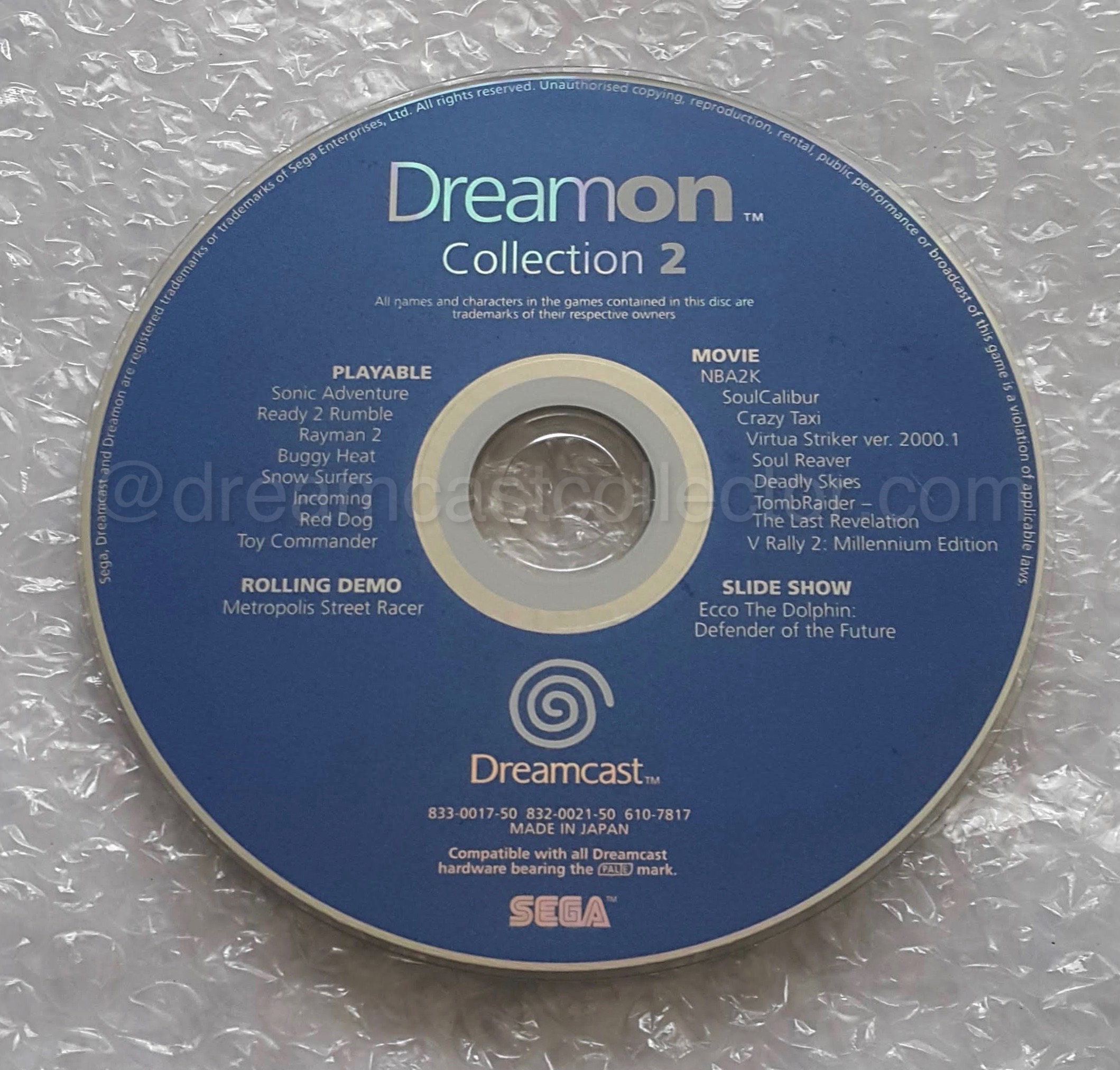
It seems likely, that DreamOn Collection 2 was, manufactured in Japan for the same reason as its predecessor. I’m under no illusion that it was, replicated in significant quantities.
One aspect of this release that I’m convinced about is the vast majority of people who own a copy did so by way of the disc’s inclusion as a pack-in demo disc. I’m sure SEGA would state that they wanted to maintain a uniform aesthetic for the various PAL Not for Sale software. This resulted in this updated instalment continuing to mirror the previous packaging of the DreamOn Volume 1 demo disc. However, the meagre packaging it came in was probably honestly more for cost-saving measures than anything else. Once again, this new instalment of the demo disc came sealed in a transparent jewel case without either a front or tray insert. However, either a desire to differentiate this updated instalment of the demo disc from the previous incarnation or to more closely align with the Dreamkey browser refresh saw the metallic blue found on that software also being adopted, for the disc label on this release.

I haven’t managed to find any examples of the software, which were domestically produced by EMI HOLLAND for SEGA Europe. The massive amount of existing inventory probably precluded the need to press additional print runs.
With its distribution coming well after the systems initial launch period, it’s hardly surprising that the content offered on DreamOn Collection 2 has been significantly increased. Not just by the number of titles that it featured but by the wide variety of different types it contains. As I’ve already suggested continuing the budget packaging aesthetic for the bundled demo discs meant the absence of any inserts to document the various trials included. This necessitated the contents being displayed on the disc label itself. I’ve always found this strange as both the NTSC J & NTSC U markets multi-game demo discs either came with a sleeve or had front inserts which provided information about the contents or control schemes for the titles included. It seems remiss of SEGA Europe not to have done something similar.
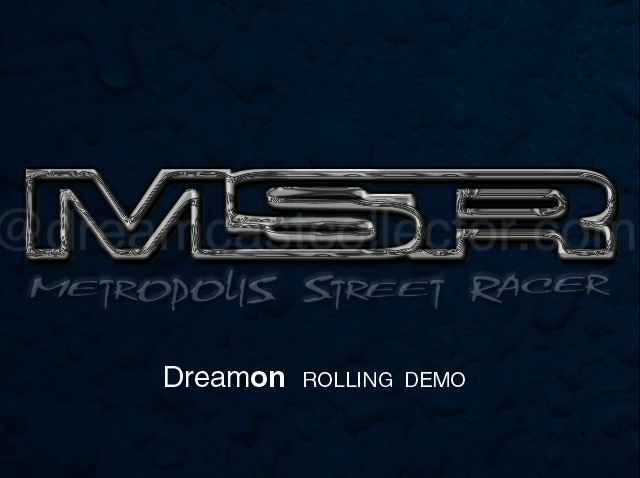
The early footage of titles included on the many Dreamcast demo discs is now more important from a historical and archival perspective. This is especially true of more popular games like MSR which has an early demo featured on DreamOn Collection 2.
As an updated demo disc, it’s hardly surprising that not just the amount of content is increased but also the variety of demos offered by DreamOn Collection 2. Beginning with the left side of the disc label under the ‘PLAYABLE’ category is the following demos. Sonic Adventure, Ready 2 Rumble, Rayman 2, Buggy Heat, Snow Surfers, Incoming, Red Dog & Toy Commander. Underneath this selection is ‘ROLLING DEMO’ which only has a single demo of Metropolis Street Racer. The right side of the disc is concerned with listing the various non-interactive content starting with those listed under the ‘MOVIE’ heading. These are NBA2K, Soul Calibur, Crazy Taxi, Virtua Striker ver 2000.1, Soul Reaver, Deadly Skies, Tomb Raider- The Last Revelation & V Rally 2: Millennium Edition. The last type of demo on the disc barely qualifies as a demo and is a ‘SLIDE SHOW’ of Ecco the Dolphin Defender of the Future. The lower portion of the disc unusually displays three product codes in a row. As expected, the first two are PAL serials of 833-0017-50 & 832-0021-50. The final serial is a Japanese designation of 610-7817, which is a truncated version of the discs, complete catalogue code. Underneath these, it states ‘MADE IN JAPAN’ that leaves the obligatory SEGA logo and copyright information.
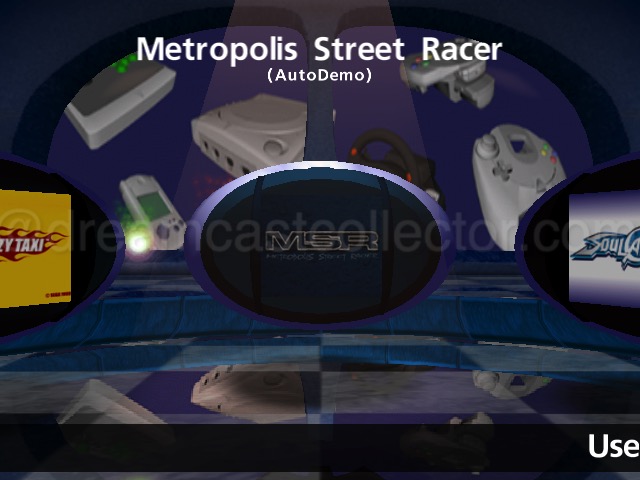
Again, while DreamOn Collection 2 features a better selection of titles, many are still relegated to non-interactive content. If Soul Calibur & Crazy Taxi could’ve been playable along with already playable Sonic Adventure, it likely would’ve been an impressive showcase of the system to the general public.
It’s worth acknowledging that DreamOn Collection 2 is different to all the preceding Not for Sale software that I’ve detailed. This relates to its distribution as all the previous examples were substituted, by domestic revisions manufactured by EMI-HOLLAND. These are also the most prevalent iterations of the software in question. For some unknown reason, it appears that DreamOn Collection 2 seemingly only exists as a Japanese catalogued disc. I can’t confirm this conclusively, but every example I’ve seen in the last twenty years is the Japanese disc. Given how prevalent DreamOn Collection 2 is, I’m convinced that I would’ve encountered a subsequent domestic iteration by now if one had existed.
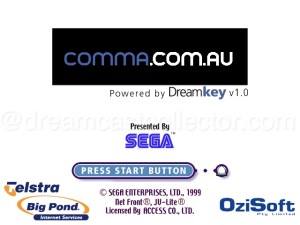
Given the reputation of OziSoft, I’m surprised to see their branding so prominently displayed. Telstra was the telecom provider they partnered with and Big Pond was the name of their internet service. Whether the debacle surrounding the signing of a telecom partner resulted in SEGA Japan using the existing initial Dreamkey software or they
The penultimate iteration of the original DreamKey software is distinct compared to the previous iterations of the browser. It represents the first Dreamkey variant to be a dedicated non-European release. Due to the confusing nature of its initial distribution, it’s also possible that it also was released in New Zealand as OziSoft was the official SEGA distributor in both markets. The issue with this is it’s known, that no online-enabled software was officially released in New Zealand. So, whether the browser saw a release in the country is debatable. A combination of a late launch, inept distribution and lack of marketing conspired to leave sales of the Dreamcast in Australia as negligible at best estimates of around 10,000 are touted as a realistic figure. I’ve mentioned this as the browser was, intended to accompany the system, it stands to reason that the number of Dreamkey discs will probably be slightly less than the total number of systems sold. Continuing this train of thought, I doubt there will be much argument that this iteration received the second-lowest print run of any of the Dreamkey browsers.
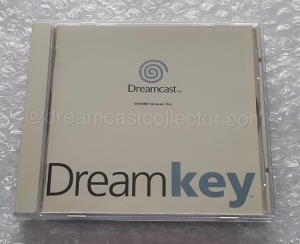
Arguably, this penultimate release is the second hardest variant of the DreamKey browser to acquire. The reason why the Australian iteration suffers this fate is due, to two competing factors. The first is undoubtedly down to the lack of an initial browser disc, included with the system, which meant that its actual initial distribution is questionable. The second is the number of Dreamcast’s sold in both Australia & New Zealand means the number of corresponding discs released was minuscule.
OziSoft’s distribution of the Dreamcast in Australia is well known to have been incompetent at best, combined with an almost nonchalant attitude towards the system. Arguably this is best characterised by OziSoft’s failure to have negotiated a deal with a telecom provider to provide the network infrastructure in Australia till months after the original launch date. Perhaps mitigating the impact of this fiasco, the system was continually delayed, even so, the browser was released months after the system had launched. The Australian Dreamkey was finally released in March of ’00 after OziSoft had signed up Telstra to provide internet access through their Big Pond internet service. Amazingly it is reported that this deal was only, concluded a month before the release of the browser software. I can only imagine that this caused some anxiety for SEGA of Japan as they had to replicate the Dreamkey discs at short notice. Initially, this caused me something of an enigma to how this incarnation of the browser was, distributed. As with it being shipped well after the system, how did customers who purchased the initial launch stock get their browser discs. Thankfully, the remnants of the archived Dreamcast.au portal provided the answer that I’ve reproduced below.
Dreamcast online NOW!
If there’s anyone out there who has not received their Dreamcast browser CD then they should contact Ozisoft customer support on (02) 9666 0100 to have their Dreamkey CD sent out to them immediately. For any other support issues with getting the Dreamcast working online, call Telstra customer support on 131282.with the only other information being a solitary Japanese serial of 673-01244.

The rear insert is as uninspired as the front cover with only the Australian flag and support number featured, along with the usual mandatory branding and logos. Unfortunately, this means an even greater portion of the back insert is blank. Whether or not this rear insert lends any credence to if this version of the browser saw a release in New Zealand is debatable.
Unsurprisingly, the rear insert is much like the front insert was, also based on the original design of the initial European Dreamkey. Arguably, it is even plainer due to it only displaying the Australian national flag and technical support details. The spines of this release are also different as, while they still exhibit the obligatory swirl logo, they don’t display any product codes. Together these changes conspire to leave this variant even more visually barren despite the usual company logos and branding being present and correct. The only other information, of note, is a solitary Japanese serial of 673-01244.
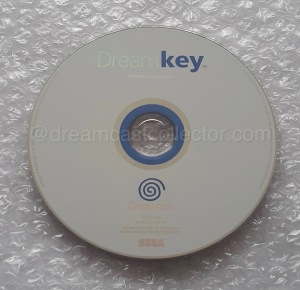
The Australian DreamKey at, first glance, looks almost identical to the original edition of the software released in Europe. The main visual difference is it omits the French & Spanish text for obvious reasons and states Internet Browser Disc in English. It also dispenses with a PAL designation beginning with 833- or 832- and instead shows a Japanese serial of 673-01243 on the disc label.
Adhering to the template of the initial release of the browser, the disc label also reverted to the white colour scheme of the original European Dreamkey. As with that earlier iteration, the Dreamkey branding & SEGA logos have also been inverted, from the front insert on this later Australian instalment. It also retains the single language English ‘Internet Browser Disc’ text from the front inlay. The discs plastic hub has been partially obscured, by the now familiar metallic blue circle that, in turn, is encased by the discs mirror band. The lower portion of the disc label has the obligatory Dreamcast swirl logo that underneath is a single Japanese serial of 673-01243. Beneath this product code, it states ‘MADE IN JAPAN’ that only leaves the SEGA logo and the discs copyright information, which is situated around the outer edge of the disc.
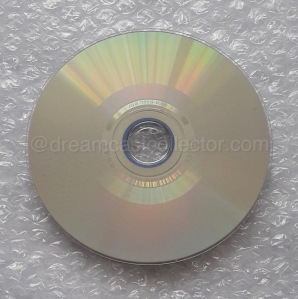
The Australian iteration of the DreamKey browser is a simple rebadging of the initial European v 1.0 release of the software. To the extent that it also still retains all the promotional images that are viewable on a PC or MAC. Amusingly, even the credits are the same with SEGA Europe thanking BT for the network infrastructure across Europe.
As is usual on the data side of the disc, the inner ring contains the standard barcode that’s subsequently, followed by an IFPI SID Mastering code of L155. If this code seems familiar, it’s because it represents the previously documented Toshiba-EMI, Japan. Next is my copies, full catalogue designation of 610-7719-0326 3 A1. As I mentioned earlier, I doubt many print runs were, replicated if, at all after the initial stock of Dreamkey’s had been distributed to OziSoft. The mirror-ring displays an IFPI Mould code that unfortunately has a similar issue to the previous Dreamkey Version 1. 5, iterations and is also unreadable with the naked eye. I suspect that this disc will likely share the same IFPI Mould code as those, but as with those particular discs, I don’t currently have the necessary equipment to document them.
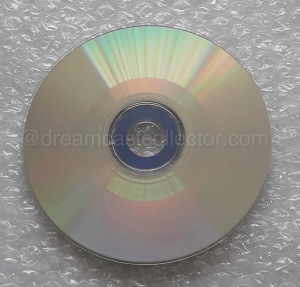
The data side of the EMI HOLLAND iteration of the DreamOn Volume 1 is noticeably different from the initial Japanese release. I suspect that SEGA Europe shipped stock of this disc along with the rest of the Australian retail inventory.
I think it’s important to state that the DreamOn Volume 1 demo disc that was, eventually released in Australia is not a Japanese catalogued disc. It is the later domestic European EMI-HOLLAND version of the demo software. The inventory of the Japanese manufactured iteration had long since been exhausted in Europe when the Dreamcast launched in Australia. I’m convinced that SEGA Europe still had massive amounts of the European 833- variant remaining in distribution channels. Given this situation, it would’ve been relatively straightforward for SEGA Europe to supply what would’ve been a minuscule amount of stock for the Australian market. Since no SEGA branded software accompanied the initial Australian Dreamcast launch, I’m unsure how OziSoft distributed the initial batch of DreamOn Volume 1. I’ve seen contemporary reports that it was given away by retailers once stock of the demo disc arrived but I’ve been unable to confirm this. Much like the browser software DreamOn Volume 1, was subsequently bundled with the system at an undetermined date.

It appears that DreamOn Collection 4 is more common in select European markets than others. Certainly, in the UK it’s much less prevalent than previous editions. Its product code states that it was, intended for a Europe wide release I assume a large amount of existing inventory and the announcement of the cancellation of the system affected its release.
I have to confess I know almost nothing about the penultimate disc I’ll detail. DreamOn Collection 4 also represents the final instalment in the collection series of demo discs. In the same fashion as the software discussed in the article, I’ve been unable to locate any official information about its distribution. While this iteration was, also packaged along with the system. It seems that a combination of pre-existing inventory of earlier instalments and a release shortly before the announcement of the cancellation of the system conspired to leave this instalment with a sporadic distribution. While not conclusive by any means in late ‘02, I picked up another PAL system when the system was being liquidated, which was the triple software bundle that still came with DreamOn Collection 2. I think this is explained by Big Ben Interactive, using whatever stock was on-hand to clear out their distribution channels. I don’t think it’s unreasonable to assume it was, produced in significantly fewer quantities than its predecessors.
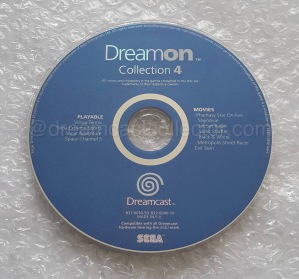
Undoubtedly a large part of the confusion surrounding this disc is the fact on the face of the disc, it states MADE IN EU which likely many would instantly discount this from being a Japanese catalogued release. While all the other European utility discs I’ve documented received subsequent domestically manufactured iterations by EMI-HOLLAND this final DreamOn Collection 4 release seemingly never saw such a revision.
As it was a late release being the final pack-in PAL demo disc, unsurprisingly, DreamOn Collection 4 comes packaged in the same budget Esque fashion as the three previous instalments. The front of the disc mirrors the previously documented DreamOn Collection 2 disc and is also metallic blue. It continues to list the interactive titles found on the disc on the left side of the disc label. Sadly, the number of trials contained on this instalment is markedly reduced with the ‘PLAYABLE’ category only offering Virtua Tennis, Sega Extreme Sports, Sonic Adventure & Space Channel 5. The right side of the disc details the non-interactive demos found under the ‘MOVIES’ heading. These are listed in the same order as found on the disc itself, Phantasy Star On-line, Shenmue, Jet Set Radio, Sonic Shuffle, Black & White, Metropolis Street Racer & Evil Twin. With most of the label taken up with the titles featured on the disc, the amount of space remaining is quite limited. The lower half of the disc features the obligatory Dreamcast swirl logo that, underneath are two product code’s both of which are PAL designations of 833-0030-50 & 832-0040-50. Interestingly it also states MADE IN EU below, these code’s just leaves the familiar SEGA logo at the bottom edge of the disc and the copyright information around the top edge.

The reverse adheres to the standard template with the discs catalogue designation of 610-7935-0488 MT BO5 catalogue code displayed in the inner ring. Sadly, this disc doesn’t have any omake content just the usual copyright information.
Conforming to expectations, the relevant information on the reverse of the disc is, contained around the mirror band. The discs barcode is noticeably smaller in size than some of its predecessors. Its IFPI SID Mastering code is IFPI L262 that as I’ve mentioned, relates to Memory-Tech, Japan. My copies full catalogue designation is 610-7935-0488 MT B05 which despite, being a late release, seems to imply the potential for alternate catalogued variants. Unfortunately, the familiar issue of the IFPI Mould code being unreadable also affects this disc. It’s been scratched into the stacking ring, which means it’s quite strenuous to attempt to decipher by the naked eye. Another issue that might have significance is I’ve been unable to attribute this code to anyone. It leads me to suspect that I’ve recorded it wrongly.

Unfortunately, unless you have the requisite hardware the Indian Dreamkey is functionally useless. The initial boot screens are all still present but are followed, by an error message.
The final incarnation of the original DreamKey browser was once again another exclusive regional release for a market I doubt the majority of collectors even realised existed. Certainly, I don’t think there will be much argument that the Indian DreamKey browser is likely the most obscure version of the software released and probably one of the toughest PAL discs to acquire. I have to confess I don’t own an example and, I haven’t seen a copy of it in person & only know of a small number of collectors who possess a copy. Despite this situation, after reaching out to other collectors, they graciously provided pictures and information about this elusive Indian iteration of the DreamKey.
Essentially, the front of the Indian Dreamkey is indistinguishable from the earlier Australian iteration to the extent placed side by side it would be impossible to tell them apart. Much like its predecessor, the front cover is equally as barren with the Dreamcast swirl logo & Dreamkey branding prominently displayed. It also retains the English ‘Internet Browser Disc’ which, I found slightly unusual. Whether this is due to English being widespread throughout the country or SEGA of Japan reusing existing assets is debatable. Unfortunately, this leaves the front insert of the final incarnation of the original Dreamkey browser, just as lacklustre as the three previous releases of the software.

Unfortunately, despite being the final iteration of the original Dreamkey browser the Indian iteration’s reverse insert is identical to the previous Australian release. As expected, it features the Indian national flag and corresponding technical support details and Japanese product code. But, overall, it’s visually very spartan. The scan of the rear insert is courtesy of Wombat.
I don’t think that it’ll come as any great surprise that the reverse of the Indian Dreamkey’s packaging continues to employ the same basic design as all the previous iterations of the original Dreamkey. Either by choice, or necessity, apart from the inclusion of the Indian national flag and technical support number for owners to contact for assistance, everything is almost the same as the previous Australian instalments reverse. The only visual change is this edition reverts to displaying a truncated version of its catalogue code on both of its spines. The only information left to document apart from the usual branding & logos is a Japanese serial of 673-02116 that is, located on the lower left of the rear inserts main panel.

It seems strange to still see the original design of the DreamKey being used on such a late release, especially as it had been succeeded by at least two browser revisions in Europe. I’d like to extend my appreciation to Wombat for providing the scans of the Indian Dreamkey used in the article
With this last incarnation of the original Dreamkey restricted to a handful of small test markets, it’s perhaps unsurprising that nothing has changed layout-wise since the previous Australian iteration. It retains the white disc label of that release, with the only other colour featured being the familiar metallic blue. This is employed on the two-tone Dreamkey branding, in addition to a band on the discs plastic hub that in turn is encapsulated by the discs mirror band. Lastly, it is found on the PAL blue swirl logo on the lower portion of the face of the disc. Underneath this is a Japanese product code of 673-01243 and it also states ‘MADE IN JAPAN’ & ‘To be used only in India’.
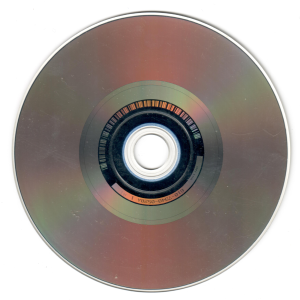
Unfortunately, I don’t own the necessary Indian Dreamcast to run this iteration, of the browser. However, I doubt any alternate numbered discs will exist, given the situation surrounding its release. Scan gratefully provided by Wombat.
As expected, the data side of the disc has its layout unchanged from the previous browser discs. Half of the mirror band is, occupied by displaying the disc’s prominent barcode. Opposite this is the disc’s full catalogue designation of 610-7940-0520A 1 A1. I’m convinced that the limited nature of this release means that the likelihood of potential numerical variants existing is slim to none. It also has an IFPI Mastering SID code of IFPI L155, which is the familiar code for Toshiba-EMI, Japan. I’ve been unable to discern the IFPI SID Mould code so, while I can make a reasonably informed guess, I’ll wait till I can conclusively confirm it before updating the article.

Whilst it loads the usual Dreamcast splash screens unless you have a corresponding Indian Dreamcast, the software won’t boot any further. You can get as far as this error screen which means unfortunately, I can’t confirm who SEGA partnered with to provide the network infrastructure in India.
One unique aspect of this release is that it doesn’t boot on a standard PAL Dreamcast. I was aware by two owners that they had been unable to get the browser to load. I was initially perplexed why this would be the case as it was a PAL region disc. When I acquired a copy of the software, I naturally tested it for myself and can confirm that it doesn’t boot on a standard PAL system. It will initially load then displays an error message that makes it’s impossible to go any further. I have to admit my technical knowledge isn’t particularly great, but I’d hazard a guess that it’s an issue with either the BIOS or potentially the systems flash memory. With the browser relegated to limited test markets, I’m convinced that SEGA didn’t update the BIOS especially as it does load the usual warning screen. I could envision it’s something in the flash memory only potentially allowing region coded software, to be able to run.
I’ll speculate but the reason for this could have been a belated anti-piracy feature. SEGA had already removed MIL-CD support from select later Japanese models of the Dreamcast so, I can see them continuing to evolve, the security of the system. If they intended to introduce this feature into the PAL market, the limited Indian test markets would represent an ideal opportunity to accomplish this. In conjunction with the absence, of MIL-CD support, if SEGA altered the Flash Rom to allow only Indian PAL software to boot this would’ve represented a significant step in stopping copied software. No doubt the Indian market would’ve also been highly susceptible, to grey imports of cheap PAL stock which likely would undercut the official distributors. So, with the Indian Dreamcast only allowing dedicated Indian software to run, this would alleviate this issue.
I have to admit it was only after the discontinuation of the Dreamcast had occurred that I became aware that the system even received a limited release in India. I think it’s fair to say that even now, many dedicated PAL collectors are surprised to learn that the system was released in the country as it is even now, an oft-overlooked market. To compound matters, further official information about the plan for the Dreamcast’s distribution in India is scant at best. Unsurprisingly, most European hobbyist sites didn’t cover the launch, of the system in this final PAL territory. While several Indian sites did cover the upcoming release of the system, the information they present is somewhat contradictory at best. Many have conflicting information about who was responsible and what cities the system was, distributed in. Given the limited information available, I’ve linked to a contemporary, article that details the then-upcoming launch. Importantly it states that both a DreamKey & DreamOn demo disc, was packaged along with the system. © 2014 Cyber Media (India) Ltd. All rights reserved.
For the sake of transparency, I should add, that several different company’s & distributors have been associated, with the release of the system in India. Some undoubtedly will have been erroneously credited, as having been involved with the system. While I obviously can’t confirm It, SEGA is known not to have been directly involved in the distribution of the system but relied on their local affiliates. I’m convinced local partners were responsible for distributing the system in their particular test market. Potentially, this might explain some of the disparity between reports of the number of companies involved with the system. What can be confirmed by the majority of contemporary, articles is that the launch was extremely limited to just a small number of cities. It’s also clear that no additional software was released in support after the initial batch was released, and the system was, quickly discontinued.
The elephant in the room is the last known, Japanese catalogued utility disc, that’s conspicuous by its absence. The elusive Indian DreamOn demo disc is reported in multiple articles to have been packaged, along with the Dreamkey browser with the system. Unfortunately, I’ve never seen this variant in person nor know of anyone who owns a copy even online no trace seemingly exists. However, this isn’t particularly concerning given just how scant any example of Indian Dreamcast software is. I can well believe that SEGA of Japan likely only replicated a single batch of the browser & demo disc, in addition to the initial retail titles for the country. Probably, as it was limited to select cities, they wanted to see from their local affiliates how the system performed before ramping up production. Sadly, this never happened as SEGA’s foray into India wasn’t successful.
As I’ve elaborated, this article isn’t, intended to be an exhaustive detailing of Japanese catalogued software released in the former PAL region. Instead, it focuses on the generally marginalised utility software that bears this classification. As some readers may have noticed, I’ve deliberately chosen not to include the more traditional examples of PAL software that also bears the 610- designation. I believe this amounts to a further five demo or non-retail game titles that eventually I’ll cover in their own respective individual articles. Hopefully, I’ve managed to illustrate that there’s the potential for a massive number of undocumented discs with alternate serial designations. As there is no consensus on what constitutes a variant catalogued disc ultimately, it depends on individual collectors to decide what comprises a unique release.
As always, I appreciate everyone for taking the time to read this article especially given the maligned status of PAL utility software. While I understand why the subject matter generates little enthusiasm from the Dreamcast community, I think it’s still worth documenting these discs. Hopefully, this article will be beneficial, to the small but dedicated group of 610- software collectors. Many of which are likely to be unaware that this subset of PAL discs, even exists. Given the fact that despite my best intentions, the article is currently incomplete, I welcome any information that readers can provide. Especially, about the IFPI Mould codes that I haven’t managed to record or anything relating to the Indian Dreamcast or its software. You can contact me either directly through the site or on social media at Twitter & Instagram. Any information will be gratefully received, and I’ll credit you accordingly in the article.
Given this situation to provide a comprehensive overview of the various discs that comprise this unique subset of software, I reached out to fellow collectors. I’d, like to extend my gratitude to the following individuals who took the time to help. @CombyLaurent1, who graciously provided pictures & information about the Indian Dreamkey. You can find his informative site at https://en.sega-dreamcast-info-games-preservation.com/ and it is well worth a look, at the more esoteric side of Dreamcast collecting. Massive thanks must go to Wombat, who provided the actual scans of the Indian Dreamkey that I’ve used in the article. Last but not least is @jironosuke99, who provided information about another collector. His site is http://jironosuke.cocolog-nifty.com/blog/ and is a treasure trove of information about Not for Sale software across multiple formats.
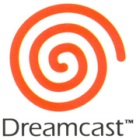

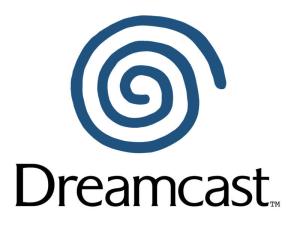
That Indian DreamKey disc is interesting. Have you tried ripping the disc and examining the .PVR texture files to look at the splash screen? DreamKey’s texture files are interesting and contain some leftovers from DreamPassport, clues about an MP3 download service, instant messaging service, and interestingly, a choice of USA flag in the setup pages which is of course never used. Reach out to me via my email if you’d like more info.
LikeLike
Thanks, I know that the original Dreamkey is based on the Dream Passport code, with many of the features of that browser absent. As for searching through the files, unfortunately, I’m on a Mac the PVR tool seems to be Windows only. Apart from the splash screen, I doubt everything else will be untouched from the initial European release of the browser.
LikeLike
Is it possible to get a copy of it?
LikeLike